I Am... Homemade Salsa Verde
Homemade salsa verde and chips taste so much better than store bought! Homemade salsa verde has got to be one of the most versatile sauces out there. You can use it to enhance breakfast, lunch, or dinner and it’s the base of so many delicious dishes. Who doesn’t love green salsa?! I always, always go for salsa verde when presented with the choice of red or green. I just love the herbaceous brightness of it.
What is salsa verde?
There are so many kinds of salsa out there. After all, salsa means sauce and there are so many kinds of sauce out there. But, I must say, the three most common are salsa roja (red), salsa verde (green), and salsa fresca/pico de gallo (fresh). Today we’re talking about salsa verde, or green salsa. Salsa verde is a salsa made using tomatillos, a type of nightshade that looks like a green tomato, but isn’t.How to make salsa verde
This is one of the easiest salsas to make - there’s virtually no chopping. All you need to do is prep, roast, blend, and enjoy.- Prep the tomatillos and aromatics. Remove the husks from the tomatillos and give them a rinse so they’re not sticky. Pat them dry. Wash and dry your green chiles. Lightly coat the tomatillos and chiles with a neutral oil and place them on a baking sheet.
- Roast the tomatillos and peppers in the oven until soft and caramelized. Stem the peppers in a bowl with a lid and then remove the skins.
- Pop the tomatillos, peppers, onion, garlic, cilantro, garlic, and lime juice in a blender and pulse.
- Taste, season with salt and enjoy!
Is salsa verde spicy?
The beauty of salsa verde – and all salsas, really – is that you can make them as spicy or mild as you want by adjusting the amount of chiles you put in them. If you want a bit of spice but not too much heat, be sure to remove the ribs and pith (the white parts inside the pepper), that’s where most of the spice is. This salsa verde is completely customizable because you’re going to chose which green chile peppers you want to use.Which peppers for salsa verde?
Personally we LOVE Hatch chile salsa verde the smokiness of Hatch chiles pairs perfectly with tomatillos. You can also use jalapeños, poblanos, serrano, or Anaheim. From spiciest to mildest, it goes: 🔥🔥🔥🔥🔥 Hatch (they go from mild to extra hot) 🔥🔥🔥🔥 Serrano 🔥🔥🔥 Jalapeño 🔥🔥 Poblano 🔥 AnaheimWhat are tomatillos?
Tomatillos are a staple in Mexican cooking. They come covered in a papery husk on the outside with a firm round green fruit on the inside. Eaten raw and cooked, they’re used in a variety of dishes, most well known in salsa verde. They’re also used in stews, soups, and other sauces. Tomatillos have a sweet and tangy, earthy, and slightly acidic. They’re perfect for salsa.How to choose tomatillos
Choose bright green tomatillos with an tight, intact green husk that covers the fruit with just the bottom of the husk slightly split open. Tomatillos should be firm. Smaller tomatillos tend to be more ripe and sweet. You can find tomatillos in the grocery store, usually near the jalapeños.How to prep tomatillos
Remove the papery husks by pulling them away from the fruit and twisting at the stem. Rinse them under cool water until they’re no longer sticky. Pat them dry and they’re ready to use.Do you need to remove the skins from tomatillos?
Nope! The skins on tomatillos are thin and edible so you don’t need to peel them. Just be sure to remove the husks.How to roast tomatillos in the oven
- Preheat the broiler.
- Prep the tomatillos by removing the papery husks, rinsing, and drying well.
- Lightly coat the tomatillos in oil.
- Place on a parchment or foil lined baking sheet and broil for 10-15 minutes until soft and lightly blackened, flipping as needed.
How to pan-roast tomatillos on the stove
- Prep the tomatillos by removing the papery husks, rinsing, and drying well.
- Heat a heavy bottom skillet over high heat.
- Add a touch of oil to the skillet and add the tomatillos and sear over high heat, flipping as needed, until the tomatillos are soft and lightly blistered.
How to air fry tomatillos
De-husk, wash, and dry the tomatillos. Cut them in half and add to a parchment paper or foil lined basket of your air fryer. Air fry at 400°F for 10 minutes or until brown and lightly blistered.What to do with salsa verde
- enjoy them with homemade tortilla chips
- make chili verde
- make enchiladas
- use as salsa for tacos
- make green chilaquiles
- enjoy on top of cilantro lime rice
- make hot honey chicken
- have it with nachos
Tomatillo Salsa Verde
Who doesn’t love green salsa?
- 1 lb tomatillos (dehusked and cleaned)
- 2 green chiles (of choice)
- 1/4 onion (chopped)
- 3 cloves garlic
- 1 cup fresh cilantro (roughly chopped)
- 1/2 lime (juice only)
Set your oven to broil. Remove the outer casings from the tomatillos. Wash and throughly dry the tomatillos and green chiles.
Lightly coat the chiles and tomatillos with a neutral oil and place them in a roasting dish. Roast for 10-15 minutes or until the tomatillos are soft and the peppers are blistered, flipping as needed.
Carefully move the chiles to a bowl and cover with a plate or plastic wrap to let steam for 10 minutes. Rub the skins off the peppers, stem and seed (if you want a less spicy salsa).
Place the peppers, with the roasted tomatillos, onion, garlic, and cilantro into a blender. Purée, taste, and season with salt.
Enjoy!
I Am... Cilantro Lime Rice
If you’re anything like me, you love cilantro lime rice. Along with tasting amazing on its own, it goes with everything and is a great side dish. If you’ve ever had the Chipotle cilantro lime rice, you know how addictive it is. It can go in burritos, in bowls, or on a combination plate. The best part about this recipe is that it comes together so easily. It’s definitely perfect for a weeknight dinner or meal prep. I think of cilantro lime rice as the bright, tart, refreshing cousin to arroz rojo or tomato tinged Mexican rice. If you’re a rice lover, you’ll want to make this recipe, stat.
What is cilantro lime rice?
Cilantro lime rice is fluffy long grain rice with cilantro and lime. It sounds simple, but like all delicious and good recipes, the dish is so much more than the parts. Cilantro lime rice is fresh and bright, fluffy, and full of herby cilantro flavor. It goes especially well with Mexican food and surprisingly great with Asian food too!The secret to making amazing cilantro lime rice
There are 3 secrets to making amazing cilantro lime rice:- First, toast the rice. Cooking raw rice in a bit of butter or olive oil brings out a bit of nuttiness. Toasting adds an especially deeper rice flavor.
- Second, use fresh limes. Use fresh limes for the lime juice and don’t forget the zest. Cooking the rice with lime zest lets the lime oil infuse the rice. Moreover, fresh juice adds just the right amount of tart.
- Third, add a bay leaf. A bay leaf adds a rich flavor to classic Mexican dishes. If you have them, use a Mexican bay leaf, otherwise, any bay leaf will work instead. Most recipes for cilantro lime rice skip out on this crucial step. Without a doubt, don’t sleep on the bay leaf - it’s what makes this homemade cilantro lime rice stand out from the rest.
Cilantro lime rice ingredients
- rice: classic long grain white rice is what is best - it’s fluffy and loose. You can get American long grain white rice, Jasmine, or basmati. I prefer American long grain white rice for this dish. More on rice choice below.
- neutral oil or butter: we’re going to toast the grains of rice to make them taste slightly nutty and even more like rice. You can use butter for a slightly richer taste or a neutral oil.
- bay leaves: Mexican bay leaves (pictured below) are indispensable to Mexican food. They add a mild avocado herby flavor and are that “can’t quite put your finger on it flavor” that gives well made Mexican food its authentic flavor. Mexican bay leaves are slightly more mellow than your classic American bay leaf. You can buy Mexican bay leaves in the Mexican aisle at the grocery store or online.
- lime juice and zest: fresh is best and we’re going to use both the zest and juice for the ultimate bright and fresh lime flavor.
- cilantro: fresh green flecks of cilantro add a huge hit of herbaceous flavor. We’re going for maximum cilantro flavor with 1/2 cup of loosely packed, freshly chopped leaves and tender stems.
- salt: you need salt to bring out the flavors of the rice, lime, and cilantro. I start with 1/4 teaspoon when cooking, then taste and as more if needed. Everyone’s salt preference is different, so make sure to season to taste.
- bonus: if you’re not vegetarian, use a low sodium chicken stock to cook your rice instead of water. It will infuse each grain of rice with a light chicken flavor.
How to make cilantro lime rice
- Rinse. The key to fluffy, distinct grains of rice is rinsing off any starch that might be on the outside. To begin, wash the rice in a fine mesh strainer in the sink, rinsing with cold tap water and swirling the grains with your hands. Drain the rice well.
- Toast. After that, heat up 1 tbsp neutral oil or butter until warm in a saucepan or sauce pot with a tightly fitting lid,. Add the drained rice and toast over medium high, stirring occasionally, until the grains look translucent and turn slightly golden. When the rice is translucent, stir in the minced garlic and toast for another minute.
- Cook. Add water, lime zest, a bay leaf, and salt to the pot. Then, bring the pot to a boil over high heat and when bubbly, cover with a lid, then turn the heat down the lowest it can go. Cook for 18 minutes, covered.
- Steam. When the 18 minutes are up, remove the pot, with the lid on, from the heat and let sit and steam for another 10 minutes with the lid on.
- Fluff. Finally, remove the lid and bay leaf and fluff up the rice, using a rice paddle or silicone spatula to gently scoop and mix up rice, moving the grains around the pot, fluffing, and aerating to remove any lumps.
- Season. Add the lime juice and cilantro and toss gently to incorporate. Taste and season with extra salt if needed. Enjoy!
Cilantro lime rice in the rice cooker
The main difference between stove top and rice cooker cilantro lime rice is the rice to water ratio. For a rice cooker, you need 1 cup of water for 1 cup of rice.- Start off by rinsing your rice in a fine sieve, then drain well.
- Skip out on toasting the rice – rice cookers don’t get hot enough. If you want to toast your rice, do it on the stove in a pan, then add it to the rice cooker pot.
- Otherwise, add 1 cup of rice along with 1 cup water, 1 clove minced garlic, 1 tbsp oil, lime zest from 1 lime, 1 bay leaf, and a 1/4 tsp salt.
- Cook the rice and when it’s done, open the rice cooker, and remove the bay leaf. Then, fluff the rice with the lime juice and cilantro. Enjoy!
Cilantro lime rice in the Instant Pot
The main difference between stove top and Instant Pot cilantro lime rice is the rice to water ratio. You only need 1 cup of water for 1 cup of rice.- First off, rinse your rice in a fine sieve, then drain well.
- Then, turn the instant pot on sauté high and toast the rice in the oil, stirring occasionally, until lightly golden. Add the garlic and cook for 1 minute, stirring.
- After that, add 1 cup water, lime zest from 1 lime, 1 bay leaf, and a 1/4 tsp salt. Cook on high pressure for 3 minutes then natural release for 10 minutes.
- When the 10 minutes are up, vent the pot, remove the bay leaf, and fluff the rice with the lime juice and cilantro. Enjoy!
Rice to water ratio
If you’re not a experienced rice maker, the number one question you probably have is: how much water do you need for 1 cup of rice. The common answer on the internet is 1 cup of rice to 2 cups of water. This is wrong! Believe me when I tell you a 1:2 ratio of rice to water is way too much water. In short, it will make your rice mushy, sticky, gummy, and clumpy. The more accurate ratio is 1:1.25. That is, 1 cup of rice to 1/4 cups of water. This ratio will give you al dente rice that is fluffy and distinct. Note, if you like your rice on the softer side you can increase the ratio to 1:1.5 or 1 cup of rice to 1.5 cups of water. If you’re making rice in a rice cooker or an Instant Pot, the water to rice ratio is 1:1, which means, 1 cup rice to 1 cup water.What kind of rice for cilantro lime rice?
The best rice to use is American long grain white rice. You can also use Jasmine or Basmati. The key is a long grain rice since long grain white rice comes out fluffy and dry with distinct grains. In essence, that’s exactly what we want for cilantro lime rice.Do you need to wash rice?
It’s not strictly necessary, but washing rice rinses off excess starch. In this case it’s a good thing because we want the individual grains of rice to be distinct and fluffy. In effect, giving the rice a rinse will make the rice cook up loose and fluffy. To rinse your rice, simply measure it out, place it in a fine mesh colander, and rinse it under running water in the sink. If you are worried about arsenic in your rice, rice from California has basically no arsenic.Can you eat cilantro stems?
Yes, absolutely! The stems have so much flavor and are as tender and delicious as the leaves. Contrary to popular belief, you don’t have to pick off individual cilantro leaves and get rid of every single stem, just be sure to trim off most of the ends of the stalk. The stems near the leaves are tender and have a lot of flavor.What to serve with cilantro lime rice
- Make a burrito bowl with a bed of rice and barbacoa, al pastor, carnitas, or birria
- Serve it as a side with chicken tinga tacos
- Enjoy with some sweet and smoky hot Hatch chile honey chicken
- Pair it with crispy chipotle chicken taquitos
- Spoon some into smoky, comforting tortilla soup
- Make a plate with chipotle wings and guacamole
Cilantro Lime Rice
If you’re a rice lover, you’ll want to make this recipe, stat.
- 1 tbsp neutral oil (or butter)
- 1 cup rice (long grain white, rinsed and drained)
- 1 clove garlic (minced)
- 1 lime (zested and juiced, separately)
- 1 bay leaf (Mexican preferred)
- 1/4 tsp salt (or to taste)
- 1/2 cup cilantro (chopped)
Heat the oil or butter in a medium sized sauce pan over medium high heat. Add the raw rice and toast, stirring, until the rice turns a light golden brown. Stir in the minced garlic and cook for 1 minute.
Add 1 and 1/4 cups water, the lime zest, bay leaf, and salt to the sauce pan. Bring everything to a rolling boil, lightly stir to break up any clumps of rice that may have formed, then cover tightly. Turn the heat all the way down to low and simmer for 18 minutes.
After the 18 minutes are up, remove the pot from the heat. Leave the lid on for another 10 minutes. When the 10 minutes are up, remove the lid and bay leaf.
Gently fluff the rice. Stir in the lime juice and toss with the freshly chopped cilantro. Taste and season with more salt, if needed, and enjoy!
If you want a bit more flavor in your rice and you’re not vegetarian, use low sodium chicken stock instead of water when cooking the rice.
I Am... Cinnamon Toast
Cinnamon toast is the best breakfast food out there, period. I love cinnamon sugar things in all their forms but I especially love the comfort and coziness of cinnamon toast. Soft, yet crisp toast slathered with buttery cinnamon sugar fills a deep void in my soul. Everything just feels alright whenever I eat cinnamon toast, no matter what. There’s something about cinnamon, butter, sugar and the contrast between toast’s golden brown outsides and fluffy, soft insides. I love the magic of toasting bread. I feel like toast is on a completely different level than plain old bread. I almost feel bad for bread and it’s lack of crispy edges. When I see loaves of bread, I’m forever thinking, "Imma toast you and you’re going to be so much more than what you are." Toasting is to bread what going to the gym is for people. They/you go into the toaster/gym: pale, fluffy, and kinda doughy. They/you emerge: hard bodied, golden, toned and firm. Everyone wins! Ultimate deliciousness. And of course, it's the toast version of hot girl summer!
How to make cinnamon toast
There are so many ways to make cinnamon toast, it’s almost like I could write a dissertation on it. There’s bread choice, then cinnamon to sugar ratio, method, so many options! The four most common ways are:- Toasting first: Toasting, buttering, sprinkling on cinnamon-sugar.
- Toasting middle: buttering, toasting, sprinkling on cinnamon-sugar.
- Toasting last: buttering, sprinkling on cinnamon-sugar, toasting.
- Compound butter: Making cinnamon-sugar butter, buttering with cinnamon-sugar, toasting.
What is the best way to make cinnamon toast?
All toast is good toast but we still went ahead and did a double blind toast taste test because I love bracket competitions. The winner of the cooking method, in order of first to last place was:- pan toasted
- toaster oven
- oven
- air fryer
Cinnamon-sugar butter
For me, cinnamon toast needs cinnamon sugar butter. When you sprinkle cinnamon sugar on top of plain buttered toast, the cinnamon sugar stays on the surface. Clearly cinnamon sugar butter is superior because the butter helps the cinnamon sugar seep into every nook and cranny of the bread. Making cinnamon sugar butter is as simple as mixing together room temp butter with cinnamon and sugar, in a 4:4:1 ratio: 4 parts butter, 4 parts sugar, 1 part cinnamon sugar. In regular tablespoons, that’s 2 tbsp butter, 2 tbsp sugar, and 1/2 tbsp cinnamon. Once you have your cinnamon sugar butter, all you need to do is spread it from edge to edge of your bread of choice (I like shokupan, brioche, or challah) and then go ahead and toast it up.Pan-toasted cinnamon toast
This was the toast with a caramelized cinnamon top and perfect texture contrast between the crisp outsides and fluffy moist insides. To pan toast: Place in a cold non-stick frying pan and turn the heat to medium. Toast until the sugar melts and caramelizes, about 2-3 minutes. Flip and lightly toast the other side of the bread.Toaster oven cinnamon toast
This was moist and fluffy on the inside and light and crisp on the outside. To use a toaster oven: Place the cinnamon sugar coated bread in a toaster oven and toast on your desired doneness setting, or until the top of the toast is bubbly and caramelized.Oven baked toast
This is a slightly drier toast, because it spends so much time in the oven, perfect for those who hate soggy bread. To oven bake: Heat the oven to 350°F. Place the toast on a baking sheet and bake for 10 minutes, then broil for 1 minute until golden.Air fryer toast
A moist and somewhat dense toast, good for people who like it more pastry-like. To air fry: Preheat the air fryer to 400°F. Air fry the toast for 4-5 minutes or until golden and crisp.The best butter for cinnamon toast
When there are only four ingredients for your cinnamon toast, you better believe that every ingredient matters. Go for good butter. Unsalted or salted is up to preference. I prefer unsalted so I can add a bit of flaky salt on top of the toast if I feel like a burst of contrast. Kerrygold is a solid butter with slightly more fat content than regular butter (82% butterfat). My all time favorite butter is from Iceland, called Smjör and it is seriously the most amazing butter I have ever tasted (even though it’s only 80% butterfat). The milk used for Smjör are from special Iceland cows that are grass fed. It’s really amazing, so much so that I brought some home with me after our Iceland trip.What kind of cinnamon for cinnamon toast?
Not all cinnamons are created equal. There are two kinds of ground cinnamon in the world: Ceylon and cassia. And from there, there are different subtypes. Both are from the bark of trees but the way the bark is harvested and taste are vastly different. The most common is cassia cinnamon and that’s the one you probably know and love. It’s the one I love actually. There are three subtypes of cassia: Indonesian, Chinese, and Vietnamese/Saigon. From these three, I love Vietnamese cinnamon because it’s intensely fragrant and flavorful. Ceylon cinnamon is what people call “true cinnamon” and it’s not as common at regular grocery stores. It’s also a lot more mild, delicate, and subtle. It’s not the kind of thing you’re going to want to use on your supermarket bread for cinnamon toast, but if you’re looking for the ULTIMATE cinnamon experience, seek it out. You can find it easily online. Whew. It’s clear I really, really, really love cinnamon toast. If you made it this far, cinnamon hugs! xoxo steph Bonus: I also wanted to mention the viral NYT way: melting butter in a pan, adding the bread, sprinkling on cinnamon sugar, flipping, and sprinkling on more cinnamon sugar. This is also an amazing method!Cinnamon Toast
Cinnamon toast is the best breakfast food out there, period.
- 2 tbsp butter (room temp)
- 2 tbsp sugar
- 1/2 tbsp cinnamon
- 1/8 tsp vanilla extract (optional)
- 2 slices bread
Cream together the butter, sugar, cinnamon and vanilla.
Spread cinnamon butter mixture on the bread making sure to go all the way to the edges.
To toast: Toast until the cinnamon sugar mixture is bubbly and toasty.
To bake: Heat the oven to 350°F. Place the cinnamon toast on a baking sheet and bake for 10 minutes, then broil for 1 minute until golden.
To air fry: Preheat the air fryer to 400°F. Air fry the cinnamon toast for 4-5 minutes or until golden and crisp.
To pan fry: Place the cinnamon toast in a cold non-stick frying pan and turn the heat to medium. Toast until the sugar melts and caramelizes, about 2-3 minutes. Flip and lightly toast the other side of the bread.
I Am... Hot and Sour Soup
Hot and sour soup is a classic, popular, Chinese soup full of tofu, vegetables, and so much flavor. It’s usually served at the start of a Chinese meal, but it’s also super filling as a main. Are you a soup person? I LOVE soup. Especially soup with things in it. Forget simple broths, soup with fillings is where it’s at. And this hot and sour soup has ALL the fillings: umami rich mushrooms, soft tofu and silky egg ribbons all in glossy, satisfying bowl. This hot and sour soup will blow your mind.
What is hot and sour soup?
Hot and sour soup is a classic Chinese soup that’s savory, spicy, and just the right amount of tangy. It’s filled with mushrooms, tofu, and silky ribbons of egg. It’s both a take-out favorite and a staple at Beijing or Sichuan restaurants.What makes it hot and sour?
The hot, aka spice, comes from white pepper and the sour comes from Chinese black vinegar. That’s it! Two simple ingredients that combine into so much more. Add these two ingredients right before you serve so their aroma and flavor is at the forefront. As the person eating the soup, when you stir it you get a burst of delicious smells, prepping you for a flavor bomb. There are a ton of recipes out there that use hot sauce and white vinegar for the hot and sour, but if you want to be authentic, white pepper and Chinese black vinegar is the way to go.How to make hot and sour soup
- Rehydrate your mushrooms and marinate the pork. Start off by soaking some dried shiitake mushrooms in hot water and marinating slices of pork with a bit of shaoxing wine and salt.
- Simmer the soup. Bring chicken stock, soy sauce, ginger to a simmer and add in the marinated pork, shiitake mushrooms, and cubed tofu.
- Cornstarch slurry. When the soup is at a simmer, it’s time to thicken it with a cornstarch slurry. In a small bowl, whisk cornstarch with a bit of cold water and slowly stream into the simmering soup. Let it come back up to a simmer.
- Eggs. Once the soup is thick and bubbly, whisk in lightly beaten eggs to create silky, delicate egg ribbons.
- Season and serve. Stir in white pepper for the hot and vinegar for the sour. Enjoy!
The 3 key ingredients for hot and sour soup
Chinese black vinegar aka Chinkiang vinegar
Black vinegar, also known as Zhenjiang or Chinkiang vinegar is a rice based vinegar that is fruity, slightly sweet, malty, and just the bit reminiscent of balsamic. It adds acidity and sweetness and is a backbone in Chinese cooking. It’s used in cold appetizers (like this one!), braised proteins, and as a dipping sauce for dumplings. You can use it just as you would regular vinegar and it’ll add just a touch more complexity. It’s sold in the Asian aisle at most grocery stores, in your local Asian grocery store, or online. If you don’t have any, you can sub rice vinegar or regular white vinegar, but it won’t be quite the same.White pepper
White pepper is the same berry (yes, pepper is a berry!) as black pepper with it’s hull soaked off. Underneath the hull, the peppercorns are smooth and white. White pepper has a brighter, sharper, more floral herbaceous note than regular black pepper. Even though they come from the same plant, the flavor of white pepper is not at all like black pepper, so if you’re not a fan of how it tastes, you can season your hot and sour soup with a bit of hot chili oil or even just an abundance of freshly cracked black pepper. White pepper is sold in the spice aisle.Cornstarch
Cornstarch is what thickens the soup as well as giving it that glossy, glistening shine. A little bit of cornstarch whisks with cold water to create a slurry to add to the soup. Making a slurry ensures that the cornstarch won’t clump up when added to the hot soup.Hot and sour soup ingredients
- Pork - The pork in hot and sour soup is mainly a flavoring agent, there isn’t a huge amount of it compared to say, the amount of chicken in chicken noodle soup. The best cut of pork for hot and sour soup is a somewhat fatty cut, preferably shoulder or a well marbled chop, sliced thin, in strips.
- Dried shiitake mushrooms - They’re sold pretty much everywhere these days, in the Asian aisle at the grocery store or online and they’re very easy to use: rinse them off and soak in hot water for about 20-30 minutes and they become soft and pliable.
- Tofu - I used a medium tofu here but you can go ahead and use your favorite kind of tofu. I’ve even seen hot and sour soups with two types of tofu. Really, it’s up to you! Soft tofu does have a tendency to break up a bit though, so if you’re looking for distinct square of tofu, go with medium or firm.
- Eggs - When you swirl lightly beaten eggs into the simmering hot and sour soup and they become delicate, golden silky egg ribbon swirls. Hot and sour soup just isn’t hot and sour soup without egg ribbons.
- Soy sauce, ginger, sugar - These are the main flavoring agents, aside from the white pepper and black vinegar. More on soy sauce below.
Dried mushrooms
Shiitake mushrooms have a huge amount of flavor and umami. They’re one of those things that keep almost indefinitely in the pantry and are perfect for pulling out when you want to give your food a boost umami. But, if you don’t want to go the dried shiitake mushroom route, you can always go with fresh shiitakes, which won’t have as much of a concentrated flavor. Other fresh mushrooms you can consider are: white, crimini, portobello, king, oyster, trumpet, enoki, shimeiji.Soy sauce
The soy sauce adds umami and color, the ginger adds warmth, and the sugar (which is optional) adds just a touch of sweetness to balance out the sour. Please try and get a good naturally brewed soy sauce - it will make such a huge difference in flavor Some brands to consider: Lee Kum Kee, Amoy, and Pearl River Bridge.Optional Ingredients
If you’re wanting to make your hot and sour soup even more authentic, try adding in these ingredients:- Wood ear mushrooms - I absolutely LOVE wood ear mushrooms but realize that they can be a little difficult to find. While you can pretty much find dried shiitake mushrooms at your everyday grocery store, wood ear mushrooms are definitely a special trip to the Asian grocery store or online order. They are worth it though! Wood ear mushrooms add a delicious crunch. They’re very mild - some would say tasteless, but their texture is what is prized in Chinese cooking. They’re always sold dry and just need a quick soak in a bit of cold water to hydrate. They come whole or sliced, either work in this soup but if you get the whole ones, be sure to cut them into bite size pieces. Add them (after you’ve soaked them in water for 30 minutes) into the soup when you add the shiitake mushrooms.
- Bamboo shoots - bamboo shoots are pretty common in hot and sour soup, but I find them hit or miss depending on what kind of bamboo shoot quality you can find. If you do use them, julienne and add them along when you add the tofu. They add a pleasant crunch and mild nutty earthy flavor.
- Toasted sesame oil - if you want a lovely nutty finish, a little drizzle of toasted sesame oil will add a lovely toasty aroma.
Hot and Sour Soup
Hot and sour soup is a classic, popular, Chinese soup full of tofu, vegetables, and so much flavor.
- 8 dried shiitake mushrooms (rehydrated)
- 8 oz pork ( shoulder or a well marbled pork chop, sliced)
- 1 tsp shaoxing wine (optional)
- 1 tsp cornstarch
- 8 cups chicken stock (sodium free preferred)
- 2 tbsp soy sauce
- 1/2 inch ginger (julienned)
- 1/4 tsp sugar (optional)
- 8 oz tofu
- 1/4 cup cornstarch (whisked with equal parts water)
- 2 eggs (lightly beaten)
- 1-2 tbsp black vinegar
- 1/2-1 tsp ground white pepper
- green onions (sliced, to serve)
Rehydrate the shiitake mushrooms by covering with hot water. Let sit for 20-30 minutes, then drain, cut off the tough tip of the stem and slice.
While the mushrooms are rehydrating, marinate the sliced pork in a small bowl with the shaoxing wine, 1 teaspoon cornstarch, and a pinch of salt. Set aside.
In a large pot, add the chicken stock, soy sauce, ginger, and sugar. Bring to a simmer and add in the pork, shiitake mushrooms, and tofu. Simmer gently for 6-8 minutes.
In a small bowl, whisk together 1/4 cup cornstarch with 1/4 cup cold water until smooth. With the soup at a simmer, slowly stream in the cornstarch slurry while stirring. Let the soup come back up to a gentle simmer, until it thickens slightly.
Keep the soup at a simmer and use a ladle to stir in a circular motion while slowly drizzling in the lighten beaten egg.
Stir in the vinegar and white pepper and enjoy hot with sliced scallions. Serve with extra black vinegar and white pepper so you can adjust to taste while eating.
I Am... Oyster Sauce
I love oyster sauce. It’s rich, thick, full of flavor, and adds a huge hit of deliciousness. Everyone knows about soy sauce, hoisin sauce, and fish sauce, but oyster sauce is slightly more mysterious. Does it have oysters in it? What is it used for? I’m here to answer all your pressing oyster sauce questions.
What is oyster sauce?
Oyster sauce (蚝油 háo yóu in Mandarin or ho yeow in Cantonese) is a thick savory sauce with a hint of caramel sweetness and umami. Lee Kum Sheung, an oyster chef, invented it in 1888 in China. It was a complete accident: he left a pot of oyster soup on a simmer and when he finally checked on it, it was a thick brown paste of caramelized sauce. He called it oyster sauce and the rest is history. Lee went on to start Lee Kum Kee, an incredibly successful Chinese sauce empire, and it all started with with a simple accidentally overcooked sauce.What does oyster sauce taste like?
Oyster sauce is sweet and salty, thick, and full of complexity. It reminds me of hints of the ocean and is full of umami and savoriness. It doesn’t taste super seafood-y, but it definitely adds an extra oomph to your dishes that you won’t be able to put your finger on. It’s best used to highlight other flavors.What is oyster sauce made of?
Oysters! Lee Kum Sheung priginally made the sauce by boiling down whole oysters with seasoning. These days it’s made from oyster extract along with sugar, salt, cornstarch, flour, and MSG.A note on MSG
MSG, or monosodium glutamate is completely safe and naturally occurring. If you love tomatoes, cheese, meat, dairy, corn, or nuts, you love MSG. MSG is the the pure salt version of glutamic acid, which is found in so many foods and made simply by fermenting things like sugar beets, sugarcane, and molasses. Think of it like yogurt, but instead of the fermentation making the end result sour, the end result is umami. There is absolutely no chemical difference between the MSG found in food and chemical MSG. The FDA recognizes MSG as perfectly safe.How to use
Oyster sauce is incredibly versatile. It’s basically an all purpose seasoning sauce. You can use it pretty much everywhere and it’s a key ingredient in Chinese cooking. A little goes a long way, so start off with a teaspoon or two and go from there. You can use it:- In stir fries - its velvety thick texture adds flavor and a beautiful gloss to stir fried dishes like vegetables, noodles, or meats.
- In braises or stews - add a teaspoon or two to enhance any long simmered dish.
- Straight from the bottle - drizzle it onto cooked vegetables or use it to marinate or brush onto grilled and barbecued meats.
Recipes with oyster sauce
- Beef and broccoli chow mein
- Gai lan aka Chinese broccoli
- Easy meat sauce noodles aka zha jiang mian
- Thai basil chicken
- Saucy veggie stir fry
- Chinese sticky rice
- Lemongrass beef
- Indonesian mie goreng fried noodles
- Garlicky lobster noodles
Vegetarian oyster sauce
If you’re vegetarian or allergic to shellfish, a vegetarian version that uses mushrooms instead of oysters is available. It has the same color and a similar texture to the real deal. The mushrooms give it a meaty, umami flavor. If you’re looking for Lee Kum Kee brand, they don’t call it vegetarian oyster sauce, instead it’s labeled as Vegetarian Stir-Fry Sauce.Is it the same as Hoisin sauce?
Oyster and hoisin sauces look the same but they are vastly different in flavor. Oyster sauce is saltier and less sweet and with a thinner texture. On the other hand, soy bean based hoisin sauce is thicker and much sweeter.Where to buy oyster sauce
It's available in the Asian aisle of pretty much every grocery store. If you see the Lee Kum Kee bottle with the two people in boats, go for that one. Basically, it’s the premium version which lists oysters as its first ingredient, unlike the one with the red panda label which has oysters listed further down the list. The premium oysters sauce packs more of a punch and the one with the panda is slightly more mild. You can also purchase it easily online.How to store
After you open it, keep it in the fridge. It should keep for up to a year.Oyster sauce substitutes
To be honest, there aren’t any sauces out there that is a one-to-one substitute, flavor-wise. If you’re looking for the dark caramel coloring portion of the sauce, use dark soy sauce mixed with a tiny bit of fish sauce. It won't be quite the same (and definitely doesn't have the same texture) but it's a decent replacement for the coloring and umami. To be honest, the commercial version is really affordable, tasty, and lasts forever in the fridge. Order a bottle on amazon and you’re set. If you’re worried about the oyster flavor, try the Lee Kum Kee bottle with the panda on it or the Vegetarian Stir Fry sauce to ease into it.Oyster Sauce Recipe
If you can't find the real deal
- 1/2 lb shucked oysters (with liquid)
- 1 tbsp water
- 1/2 tsp salt
- 4 tbsp light soy sauce
- 2 tbsp dark soy sauce
- 1 tbsp sugar
Chop the oysters into small pieces and place them in a sauce pan, along with the juices and 1 tbsp water. Bring to a boil over high heat, stirring occasionally.
When the oyster water mix comes to a boil, reduce the heat to medium-low and simmer to reduce the liquid.
Remove the heat from the pan and strain out the oysters, pressing to squeeze out the liquids.
Stir in the salt, soy sauces, and sugar. Simmer for another 10 minutes to thicken and reduce, stirring occasionally. Let cool and use immediately. Sauce will keep in a air tight container in the fridge for 1 week.
I Am... Air Fryer Donuts
Fluffy, soft, pillowy, air fryer donuts are a thing and they are amazing. If you have an air fryer, you know all about the temptation to make everything in it. It’s kind of funny because all an air fryer really is, is a tiny convection oven with lots of hot air blowing around. Technically, if you have a convection oven, you have a giant air fryer. But there’s something about an air fryer that just seems magic. And what’s even more magic is that you can fry donuts in it.
Air fryer donuts are the real deal
These yeasted air fryer donuts taste just like deep fried donuts and are way better than baked. You don’t need to break out the deep fry oil. They’re just like the regular yeasted donuts you know and love, but made easier in the air fryer. You can glaze them, like I did, or you can dip them in cinnamon sugar. Either way, these air fryer donuts are the perfect sweet treat.Biscuit vs Yeast Donuts
There are a bunch of biscuit donut recipes out there, but the truth is, if you air fry biscuit dough and coat it in glaze, it’s still a biscuit, not a doughnut. Yeast donuts are fluffier, softer, and taste more like the kind of donut you can get at a really good donuterie. Making yeast donuts takes a little more time (mostly hands off) but it’s so worth it.How to make air fryer donuts
- Mix. In the bowl of a stand mixer, mix together melted butter, milk, egg, and yeast.
- Stir. To the yeast mixture, add flour, sugar, and a touch of salt, then stir everything together until it comes into a shaggy ball.
- Knead. From there, knead the dough on high, using the dough hook, for 3-5 minutes, until the dough is smooth and elastic. If you don’t have a stand mixer, you can knead everything by hand for about 10 minutes.
- Proof. Gather the dough into a ball and let it rise, covered, in a lightly oiled bowl, until doubled, about 1 hour.
- Cut. Tip the dough out onto a lightly floured surface and roll it out about 1 inch thick and then cut the doughnuts. Place the cut donuts on a parchment paper lined baking sheet and brush with melted butter.
- Rise. Let the donuts rise, covered, until puffy and doubled.
- Air fry. Preheat the air fryer to 350°F, then air fry the donuts for 3 minutes.
- Glaze. Mix together melted butter, vanilla, milk and powdered sugar to make a glaze and dip the donuts in the glaze while they’re still warm.
- Enjoy. Pat yourself on the back for making homemade donuts and enjoy!
Ingredients
Air fryer donuts have all the same ingredients that regular yeasted donuts have:- yeast - it’s what gives our donuts a fluffy, cloud-like bite. I buy yeast in a jar and keep it in the fridge to keep it fresh. You can also buy it in envelopes. This recipe uses active dry yeast and instant yeast interchangeably.
- milk - I use 2% milk just because it’s what I always have in the fridge, but any milk will work here, even milk alternatives. The milk gives the donuts a nice creamy flavor note.
- butter - melted butter is going to add fat into to the dough to make it rich and velvety.
- egg - we need just 1/2 an egg as a binder. See below for how to measure half an egg, or double the recipe if you want to use the whole egg.
- flour - all purpose flour is what makes up the bulk of our donuts.
- sugar - you can’t have donuts without sugar! Just regular granulated here.
- salt - just a pinch of salt to bring out the flavors of the doughnut.
If you don’t have a donut cutter
A good professional donut cutter is not too expensive and there’s even really really cheap ones that you can get, but if you don’t have a donut cutter, you also can use two differently sized round cookie cutters. Just use the smaller one to cut out the donut hole in the middle.Which air fryer do you have?
If you’re wondering which air-fryer we have, it’s this one. I don’t know if it’s the best on the market because it’s the only one we’ve used, but it works great. It’s quiet and easy to clean and really big (which is good because you can put a lot of food in it and bad because it takes up a lot of room in our place).Kitchen scale
Donuts are very forgiving so you don't need a kitchen scale for this recipe. Even though the measurements are in grams first, the rough traditional measurements are also given. But, if you're going to be baking consistently, you should really consider investing in a kitchen scale. A kitchen scale is an inexpensive tool that will give you accuracy and make your life so much sweeter.Tips and tricks
- To measure out 1/2 egg: whisk it up, then measure out 1.5 tbsp or weigh out 27 grams. You can scramble up the other bit of egg for a snack :)
- Don’t roll out the dough too thin: you want it to be about 1 inch thick.
- Make donut holes: if you have small round cutter, just cut out a bunch of tiny 1 inch rounds for donut holes. They’re super cute and so easy to pop into your mouth.
- Use the scraps: combine the scraps together, wrap them in plastic wrap and let them rest for about 10 minutes so you can roll the dough out easily and make more donuts.
- Leave some space between the donuts: when air frying, the donuts need a little bit of room to grow.
Other air fryer snacks to make
- Air Fryer Oreos
- Air Fryer Popcorn Cheese Puffs (Keto friendly!)
Air Fryer Donuts
These yeasted air fryer donuts taste just like deep fried donuts and are way better than baked.
- 60 g milk (1/4 cup - whole milk preferred)
- 20 g butter (2 tbsp + 2 tsp - melted)
- 27 g egg (1.5 tbsp - half a large egg)
- 3.5 g active dry yeast (1 + 1/8 tsp - or instant rise yeast)
- 140 g all purpose flour (1 cup + 1.5 tbsp)
- 20 g sugar (1.5 tbsp)
- 1.5 g salt (1/4 tsp)
Glaze
- 1 cup powdered sugar
- 5 tbsp butter
- 1.5 tbsp milk
- 1/2 tsp vanilla extract
Stir together the milk, melted butter, egg, and yeast in the bowl of a stand mixer. Add the flour, sugar, and salt and stir until a shaggy dough comes together.
Knead on high for 3-5 minutes or until the dough is smooth and incorporated. Alternatively, mix and knead by hand for about 10 minutes.
Gather the dough into a ball and place in a lightly oiled bowl and cover. Let rise for 2 hours, or until doubled.
Tip the dough out onto a lightly floured work surface and roll to about 1 inch thick. Cut into doughnuts, gathering the excess dough and cutting into doughnuts (or donut holes).
Place the doughnuts on a parchment paper lined baking sheet and brush with melted butter. Let rise for 45 minutes, or until doubled and puffy.
While the doughnuts are rising, make the glaze by mixing together the melted butter, milk, vanilla, and powdered sugar until smooth.
Preheat your air fryer to 350°F. Gently oil the basket and place the doughnuts, slightly spaced out, into the basket. Air fry for 3 minutes. They should will be golden brown and puffy.
Glaze the donuts immediately and enjoy!
Estimated nutrition doesn't include glazing.
I Am... Vietnamese Pizza
Have you heard of Vietnamese pizza aka bánh tráng nướng? I love watching those Youtube channels where they visit street food places and night markets. I miss travel in a big way and watching vlogs of people in other countries visiting cafes and street food stalls sort of scratches the itch. It’s not quite the same but I’ll take what I can get! Recently, I saw a video of someone in Vietnam having Vietnamese pizza. I asked Mike about it and he said it wasn’t a traditional dish – it’s one of those inventive street foods that makes use of rice paper. I LOVE rice paper. Give me something wrapped in rice paper and I’m there. So when I saw that the “pizza” was rice paper that was grilled up to a crisp, I was all in.
What is Vietnamese pizza?
Bánh tráng nướng, or Vietnamese pizza, is a popular Vietnamese street food made with rice paper, egg, sauces, and toppings. It originated in Da Lat, in Northern Vietnam. A sheet of rice paper toasts over coals until crisp, then is topped with egg, green onions, pork floss, dried shrimp, mayo, and sweet chili sauce or sriracha. The rice paper gets super crisp and everything comes together in a salty, sweet, savory delicious bite. Much like regular pizza, there are loads of variations, each street food vendor has a plethora of toppings to satisfy different tastes. In Vietnam, they fold over the rice paper OR serve it flat. On the internet I’ve seen people serve it up like a pizza, cut into wedges, but I think it tastes better when you fold it up so you have the crunchy crispy bits on both sides.Ingredients
- Rice paper - this is the base of our pizza. When you grill it it gets crispy and crunchy. It’s important that when you buy your rice paper, it’s 100% rice. North American rice papers tends to contain tapioca flour because it makes it super easy to roll without tearing. Tapioca doesn’t crisp up in the same way as rice paper does, so make sure you get rice paper that only has rice listed in the ingredients.
- Egg - instead of tomato sauce, Vietnamese pizza uses egg as a sauce/binder. The egg helps the toppings stick to the rice paper and prevents the rice paper from toasting too much. It also hydrates the rice paper a bit and contributes to the crispy chewy texture. In Vietnamese they tend to use quail eggs, I went with just regular eggs just because of ease.
- Toppings - here is where people get inventive. Classic street food offerings include green onions, dried shrimp, pork floss (crispy sweet-n-savory dried pork bits), sausages, corn, canned tuna, ham, crispy shallots, lemongrass,
- cheese – especially Laughing Cow cheese.
- Sauces - sriracha, Kewpie mayo, sweet chili sauce, hoisin, anything your heart desires. Usually you’ll see sweet chili sauce or sriracha and Kewpie mayo.
How to make Vietnamese pizza
- Toast. Add a sheet of rice paper to a dry pan and toast over very low heat.
- Egg. Add an egg on top and scramble it, spreading it evenly over the rice paper.
- Top. Sprinkle on green onions and any other toppings you desire.
- Crisp. Let the egg cook and the rice paper crisp up.
- Sauce. Drizzle on a bit of mayo and sweet chili sauce or sriracha.
- Eat. Enjoy hot, open face, or folded over like they do in Vietnam.
Vietnamese pizza toppings
- Egg - they use quail eggs in Vietnam because they’re small and cheaper than chicken eggs. They also happen to have more yolk to whites so they lend extra savoriness and richness. If you have quail eggs, by all means, use them, but regular eggs work too.
- Green onions - these add freshness and bit of an onion-y bite. Sometimes people like to use green onion oil, but for ease, sliced green onions work great.
- Pork floss - sweet, savory, soft, and crispy all at the same time, pork floss is a classic popular Chinese topping used in Vietnamese pizza. It’s basically pork that’s been cooked with soy sauce and sugar until it’s dry and shreddable. You can buy it online or in Asian grocery stores.
- Dried shrimp - sweet and full of umami flavor, tiny dried shrimps common all over Asia to add a briny umami flavor and texture to a multitude of foods. To release their flavor, soak them in hot water, then simply sprinkle on the rice paper.
- Kewpie mayo - kewpie mayo adds an indispensable creaminess and richness.
- Sriracha or sweet chili sauce - If you like it hot, go with sriracha and if you want a bit more sweet with your heat, sweet chili sauce is the way to go. Drizzle to your heart’s content.
Substitutions
Vietnamese pizza is infinitely customizable so if you don’t have pork floss or dried shrimp, no worries at all. You can try tiny bits of ham, bacon, tuna, tofu, or even skip the protein all together. Personally, I like sautéing up a bit of ground pork best of all. I hope you give this Vietnamese pizza a try. I’m thinking of opening a Vietnamese pizza stand on my street corner I can live out my dreams of being a pro bánh tráng nướng maker LOL. xoxo stephVietnamese Pizza Recipe
Have you heard of Vietnamese pizza aka bánh tráng nướng?
- 1 sheet rice paper (see notes)
- 1 egg (lightly beaten)
- 1 tsp green onions (sliced)
- 1 tbsp toppings (see notes)
- 2 tsp kewpie mayo (or to taste)
- 2 tsp sriracha (or sweet chili sauce, to taste)
Add the rice paper to a dry pan over low heat. Add the lightly beaten egg on top, spreading it out to the edges.
Top with green onions and protein of choice. Let the egg cook and the rice paper crisp, moving the rice paper around if crisping unevenly.
When crispy and crunchy, finish with mayo and hot sauce to taste. Enjoy open or fold it up like they do in Vietnam. Enjoy hot!
On rice paper: North American rice papers tends to contain tapioca flour to make it easy to roll without tearing. Tapioca doesn’t crisp up in the same way as rice paper does, so make sure you get rice paper that only has rice listed in the ingredients.
Topping ideas: pork floss, dried shrimp, cooked ground pork, thinly sliced pork belly, or crispy bacon bits
Estimated Nutrition is based on 1 tbsp lean ground pork (0.5oz).
I Am... Chicken Bruschetta
If you love bruschetta and want to eat it all the time, this chicken bruschetta is for you! Bruschetta in the summertime is a masterpiece. The tomatoes are sweet and juicy, the basil is plentiful, the balsamic is tart and delicious, and the toasty bread is amazing. I love classic tomato bruschetta topping so much that we’ve been eating chicken bruschetta on repeat. I know it’s kind of funny to call it bruschetta chicken when bruschetta means to toast, but I really just like saying brew-sketta!
What is chicken bruschetta?
It’s a low-carb, protein forward take on tomato bruschetta. Instead of toast, we’re going to pan sear garlicky chicken breasts, melt a bit of cheese, and finish them with a sweet and bright flavorful tomato-basil topping.What is bruschetta?
Bruschetta is grilled bread rubbed with garlic and finished with olive oil and salt. Bruschetta refers to the bread. They come in a variety of toppings, the most common being chopped tomatoes and basil.Where is bruschetta from?
It’s from Italy and is a classic Italian antipasto, or appetizer. Its deliciousness lies in its simplicity and quality ingredients.How to make chicken bruschetta
- Filet the chicken. Cut the chicken breast in half, horizontally to make two even, flat, filets.
- Marinate. Marinate the chicken in olive oil, garlic, and salt and pepper.
- Make the topping. While the chicken is marinating, halve the cherry tomatoes and mix with olive oil, garlic, basil, and red onion. Taste and season with salt and pepper.
- Cook. Heat up a pan over medium high heat and cook the chicken breast until golden and cooked through.
- Cheese. Turn off the heat, top the chicken breast with cheese, and cover with a lid to melt.
- Top. Remove the chicken from the pan and generously spoon on the tomato topping and enjoy!
How to pan fry chicken bruschetta
To pan fry the chicken, marinate as per the recipe, then heat a non stick pan over medium high heat and sear for 3-4 minutes per side, or until the chicken cooks through and reaches an internal temp of 165°F.How to grill chicken bruschetta
To grill the chicken, marinate as per the recipe, then grill, on an oiled grate over medium high heat for 3-4 minutes per side, or until the chicken cooks through and reaches an internal temp of 165°F.How to bake chicken bruschetta
To bake the chicken, marinate as per the recipe, then cook, in a single layer in an oven safe dish at 425°F bake for 20-25 minutes, or until the chicken cooks through and reaches an internal temp of 165°F.How to air fry chicken bruschetta
To air fry the chicken, marinate as per the recipe, then cook, in a single layer in the air fryer for 8-9 minutes, or until the chicken cooks through and reaches an internal temp of 165°F.Chicken bruschetta ingredients
This is a perfect simple recipe with only 7 ingredients.- chicken breast - boneless skinless chicken breasts work best here. They cook up quickly and you can filet them into thin pieces for even cooking.
- extra virgin olive oil - use the good stuff, especially when you drizzle on extra olive oil at the end to finish. Extra virgin olive oil has so much delicious flavor and it pairs perfectly with tomatoes. Marinating the chicken in olive oil and garlic makes it extra juicy and flavorful.
- tomatoes - bright, tart, and sweet, I like using cherry tomatoes, but you can use whatever is in season at the store. I find that cherry tomatoes are the most consistent in quality because they’re grown in hothouses but in the summer heirloom tomatoes, chopped up, are the way to go.
- garlic and red onions - a bunch of garlic adds a huge amount of flavor and the raw red onions add just the right amount of sharp bite.
- basil - the more the merrier! Fresh basil and tomatoes are a match made in heaven.
- cheese - I like a bit of mozzarella cheese smothering the chicken, but it’s entirely up to you – these taste amazing without as well.
What kind of chicken?
I prefer using boneless, skinless chicken breasts in this case because they’re easy to halve into thin cutlets that cook quickly and evenly. Thighs take a bit longer and they have a slightly more awkward shape that doesn’t lie as flat as breast. Of course, they’re super flavorful and if you want to use thighs, you totally can, just make sure to adjust the cooking time.How do you cut tomatoes for bruschetta?
I like using cherry tomatoes because they’re so sweet and are very consistent in quality. I typically just slice them in half but sometimes I will quarter them. There are a bunch of hacks out there on how to cut cherry tomatoes, but really, how to do it is, one by one, just grab them and slice them in half.How to serve
You can serve chicken bruschetta on it’s own, with salad on the side, or on top of a rice pilaf, pasta, or zoodles. You can even serve it with a side of toasty bread 😉What to serve with chicken bruschetta
- cucumber avocado salad
- kale salad
- crunchy almond broccoli salad
- garlicky herb pasta
- red wine spaghetti
- brown butter parmesan noodles
- eggplant and tomato pasta
Chicken Bruschetta
If you love bruschetta and want to eat it all the time, this chicken bruschetta is for you!
- 2 boneless skinless chicken breasts
- 4 tbsp extra virgin olive oil
- 4 cloves garlic (minced)
- 1 pint cherry tomatoes (halved)
- 1/4 red onion (sliced)
- 1/4 cup fresh basil (sliced)
- 4 slices mozzarella cheese
- balsamic vinegar (as desired)
Slice the chicken breasts in half horizontally to make 4 filets. Season with salt and pepper and marinate with 2 tbsp of the olive oil and half of the minced garlic. Let temper in a cool spot while you prepare the tomato topping.
Cut the cherry tomatoes in half and finely dice the red onion. Toss with 2 tbsp olive oil, the remaining garlic, and the basil. Taste and season with salt and pepper. Set aside.
Sear the chicken breast in a non-stick pan over medium high heat until brown and cooked through, about 3-4 minutes per side. Turn off the heat, top with the slices of cheese, and cover to let the cheese melt.
When the cheese is melty, plate the chicken, topping with the tomato mix. Drizzle on extra olive oil and balsamic vinegar, if desired. Enjoy!
I Am... Tiktok Cowboy Caviar
It’s chips and dip season and cowboy caviar is here to stay! If you’re obsessed with the Tiktok green goddess salad and want an alternative salad to eat with tortilla chips, this is for you. Any salad that disguises itself as dip scooped up with tortilla chips is a yes in my books and cowboy caviar is my new favorite.
What is cowboy caviar?
Cowboy caviar, also known as Texas caviar, is a salad made from beans, black eyed peas, and diced vegetables dressed in a zippy tangy vinaigrette and eaten with tortilla chips. You can even eat it as a salad or scoop it up with chips as a dip. It’s kind of a salsa identifying as a salad in the best way possible. Helen Corbitt is the inventor of cowboy caviar – she first made it in the 1940s in Dallas, Texas.Why is it called cowboy caviar?
Helen Corbitt called it Texas caviar in a tongue-in-cheek way because it’s an appetizer like caviar, but affordable and down to earth. It morphed from Texas caviar to cowboy caviar just because of word of mouth and possibly because it has alliteration going on and it’s cute to say.Where is cowboy caviar from?
It’s from Texas. Corbitt, the inventor, was originally from New York, but it was invented in Dallas, Texas and originally served on New Year’s Eve, hence the good luck black-eyed peas.Classic vs Tiktok versions
Tiktok cowboy caviar is trending all over my for you page and this recipe is essentially the one that’s on @brialem’s page. I feel like she is single-handedly introducing it to the masses. It’s always be popular in Texas, but now everyone’s making it. Her version is essentially the same as the classic version but with some distinct differences.- Classic cowboy caviar has: black beans, black eyed peas, bell peppers, red onion, corn, jalapeños, cilantro, and sometimes avocados.
- Tiktok cowboy caviar has: everything in classic edition but different kinds of beans (even chickpeas!) and no tomatoes. It also has the addition of black olives, sweet and spicy pickled jalapeños, diced mangos, and crumbled feta. Sometimes it has peaches or pineapples added in for a sweet and savory twist.
How to make cowboy caviar
- Make the dressing: Whisk together (or put everything in a jar and shake) lime juice, olive oil, white wine vinegar, spicy honey, sugar, and taco seasoning.
- Prep: Drain and rinse the black beans, black eye peas, olives, and corn. Dice the bell peppers, red onion, mango, avocado, and jalapeños. Try to make everything the size of your beans for a consistent bite. Chop the cilantro.
- Toss: Put all the ingredients in a large bowl and toss with the crumbled feta and dressing, making sure everything is evenly coated.
- Enjoy: Enjoy as is or with tortilla chips!
Cowboy caviar dressing
The dressing is tangy and delicious. It’s essentially a lime vinaigrette seasoned with taco spices like chili powder, cumin, oregano, paprika, garlic and onion powder. For ease we’re going to use taco seasoning.Preparing in advance
Since cowboy caviar is hearty and doesn’t have any leafy vegetables, it holds well in the fridge for up to 3-5 days. Make sure to give it a stir to distribute the dressing evenly and add some freshly chopped cilantro to perk it up if needed. Note: If you’re using avocados, it’s best to dice them up and add them right before serving.How to serve cowboy caviar
- As a dip. Serve with chips! Serve it up with tortilla chips as an addictive dip. It’s a great appetizer for game day, picnics, parties, potlucks, bbqs, or even as a treat while you’re binge watching your favorite show.
- As a salad. It’s a complete salad with protein and veggies making it healthy, hearty, and filling. You can also use it as a topping on top of mixed greens, kale, lettuce, or just have it as is.
- In tacos or burritos. You can enjoy it inside tortillas as tacos or as a topping with your favorite burrito fillings, like barbacoa or chicken tinga.
- With eggs. Scoop it up on top of eggs or in omelette.
Tiktok Cowboy Caviar
It’s chips and dip season and cowboy caviar is here to stay!
- 1 can black beans (rinsed)
- 1 can black eyed peas (rinsed)
- 1 can black olives (sliced & drained)
- 1 can corn (drained)
- 4 bell peppers (diced, 1 each of red, yellow, orange and green preferred)
- 1 small red onion (diced)
- 1 mango (diced)
- 2 avocados (diced)
- 2 jalapeños (diced)
- 1 bunch fresh cilantro (chopped)
- 1 cup feta cheese (crumbled)
Dressing
- 3 limes (juice only)
- 1/4 cup olive oil
- 1/4 cup vinegar (white wine vinegar preferred)
- 2-4 tbsp honey (spicy honey preferred)
- 2 tbsp sugar
- 2 tbsp taco seasoning
- salt and freshly ground pepper (to taste)
Make the dressing: whisk together the lime juice, olive oil, white wine vinegar, spicy honey, sugar, and taco seasoning. Alternatively, add to a jar with a lid, shake well and set aside.
Rinse and drain the beans and olives and place in a large bowl. Drain the corn and add to the bowl.
Dice the peppers, red onion, onion, mango, jalapeños, and avocados. Chop the cilantro. Add everything, along with the feta, to the bowl with the beans.
Add the dressing and toss to coat. Taste and season with salt and pepper if needed. Enjoy!
If making this ahead, leave out the avocado and dice and add it to the salad right before you eat.
I Am... Red Wine Spaghetti Ubriachi
This red wine spaghetti is a classic: deeply flavorful garlicky pasta with a huge hit of robust red wine. Spaghetti ubriachi (as it’s also known) is rich and creamy, slightly tart, and absolutely addictive. On a recent trip to Montreal, one of our favorite things was spaghetti ubriachi or red wine spaghetti. In Italian, ubriachi means drunk, so essentially it’s drunken spaghetti or drunken noodles. It’s a classic Italian dish made with red wine, garlic, olive oil, butter, spaghetti, and parmigiano. It’s amazing!
What is ubriachi spaghetti?
Ubriachi spaghetti, also known as drunken spaghetti, is spaghetti tossed in a glossy burgundy butter sauce seasoned with garlic and red pepper flakes, and finished with a generous amount of finely grated parmesan. It’s rich, full of flavor, and supremely satisfying.What does red wine spaghetti taste like?
Red wine spaghetti is simple, yet rich, with an acidic kick from the wine. Think of it like an aglio e olio but with a hint of acidity (like the kind you taste in lemon pasta) and the warm richness of a good red wine thrown in. The butter adds a luscious creamy note, the crushed red peppers add a touch of spice, and the cheese adds umami and saltiness.Where is ubriachi spaghetti from?
Drunken spaghetti is a classic Tuscan dish from the Umbria region in Italy. When pasta cooks in wine, the noodles stain with a deep mahogany and left with a lightly sweet and tart, deep bold umami flavor.What kind of wine for ubriachi spaghetti?
In Tuscany, they use local red wine, such as something made with Sagrantino or Sangiovese grapes. Truly, any red wine that you enjoy drinking will work well for this dish, since you'll be reducing it down to nothingness. It doesn't need to be expensive, and in fact, the first time we had this dish, I asked our server what kind of wine they used for the sauce and he kindly asked the kitchen. It turned out to be a GIANT box of wine that was the cheapest they could find.How to make red wine spaghetti
Making red wine spaghetti is simple but show stopping. The deeply hued pasta fits in at any dinner party or even just as a special weeknight treat.- Warm the aromatics. In a large skillet, add olive oil, butter, garlic, and chili flakes. Gently warm the aromatics over medium heat, stirring, until the garlic is soft but not brown and everything smells amazing.
- Reduce the wine. Add the wine to the aromatics, turn up the heat and reduce it down into a slightly thickened sauce. You’re aiming to reduce by two thirds, so make a note of how high the wine comes up in the pan.
- Cook the pasta. While the sauce is reducing, cook the pasta according to the package directions, 3 minutes shy of al dente because we’re going to finish cooking the pasta in the wine sauce so all the deliciousness soaks in.
- Finish the pasta in the wine. Use a pair of tongs and grab the pasta straight from the water into the pan with the wine sauce (once it’s sufficiently reduced). Add in some butter and a touch of soy sauce and bring everything up to a simmer. Cook the pasta until just al dente, tossing as needed, until the sauce is glossy and coats each strand of spaghetti.
- Cheese it up. Remove the pasta from the heat and add in the cheese to finish. Toss, letting the cheese melt and coat the spaghetti, loosening with a bit of starchy pasta water if needed.
- Plate. Swirl the spaghetti on a plate and finish with freshly cracked black pepper, more cheese, and a generous drizzle of really good olive oil. Enjoy!
Our red wine spaghetti
We strayed from the classic version a bit to make this even more umami forward and delicious. Our secret ingredient is soy sauce! It adds just the right amount of salt and umami and just gives everything and extra bit of oomph. There’s just a tiny bit, but it makes a huge difference in highlighting the salty umami of the parmesan.Red wine spaghetti ingredients
There are only 8 ingredients, making this a super simple dinner, shopping wise – it’s basically a pantry meal!- Olive oil - If you want to be fancy, go for two different kinds of olive oil, one that you use for cooking and one that you use for finishing. A cooking olive oil is more affordable than a super high end finishing oil. In this recipe you can use your standard cooking olive oil, we usually reach for something like Filippio Berio or California Olive Ranch, which are super wallet friendly and available at most grocery stores. You can finish your pasta with it too, but if you want a bit of extra luxury, go for a finishing olive oil. Finishing olive oils vary quite a bit in taste, from peppery and bold to fruity and mild, so it’s best to pick one that you love the flavor of.
- Garlic - 4 cloves of garlic add a mellow garlicky sweetness and background note. If you’re a garlic lover, feel free to add more.
- Chili flakes - Just a bit of chili flakes to bring out the warmth and heat.
- Butter - We’re going to use this to emulsify the wine into a beautiful glossy sauce. Go for an unsalted grass fed butter if you can, otherwise, the butter in the fridge works just fine.
- Spaghetti - This is pretty standard, you want to go for a dried spaghetti as opposed to a fresh pasta here because the pasta finishes cooking in the sauce and a dried spaghetti holds up better.
- Red wine - A nice-ish but not too nice bottle is what we’re looking for here, see notes above.
- Soy sauce - Just a tiny, sneaky bit of soy sauce to up the umami. We like using Yamasa.
- Parmesan - This has got to be the real stuff that you grate by yourself, none of the green bottle! Grab a nice hunk of Parmigiano Reggiano, your taste buds will thank you.
What to serve with red wine spaghetti
Serve this up with a bright and bracing kale salad and some sourdough focaccia or garlicky soft rolls for the ultimate in Italian comfort food. Hopefully a red wine night is in your future! xoxo stephRed Wine Spaghetti
Spaghetti ubriachi is rich and creamy, slightly tart, and absolutely addictive.
- 2 tbsp olive oil (plus extra to finish)
- 6 cloves garlic (finely minced)
- 1/4 tsp red pepper flakes (or more as desired)
- 4 tbsp butter
- 8 oz spaghetti
- 1.5 cups red wine
- 2 tsp soy sauce
- 1/4 cup Parmigiano Reggiano cheese (finely grated)
Add the olive oil, garlic, chili flakes, and 1 tbsp butter to a large skillet and heat over medium heat. Cook, stirring occasionally until the garlic is soft, but not brown, about 3 minutes.
Add the wine and increase the heat to medium high and bring to a rolling simmer until it starts to reduce.
While the sauce is cooking, cook the pasta 3 minutes shy of al dente. Pull the spaghetti straight from the cooking water using tongs and place it into the reduced wine sauce.
Add the remaining butter and and soy sauce bring to a simmer. Cook, stirring occasionally, until the sauce thickens and the pasta is glossy and well coated.
Remove the pasta from the heat and add the cheese, tossing to melt evenly. If needed, add pasta water 1 tablespoon at a time to help melt the cheese evenly.
Serve topped with freshly cracked pepper and a drizzle of finishing olive oil. Enjoy!
I Am... Pasta Salad
No barbecue, backyard get together, or summer outing is complete without pasta salad. I love the contrasting fresh flavors of pasta salad when digging into grilled food. It’s a match made in heaven. Squishy noodles, a tangy-savory dressing, crunchy vegetables, and a sprinkling of flavor means pasta salad is here to stay.
The best pasta salad dressing
There are two camps of pasta salad lovers: mayo lovers and mayo haters. I love mayo, especially kewpie mayo, but I am a fan of oil based dressings for pasta salad. Somehow they just feel fresher and more light. Plus oil based pasta salads hold up better when served both cold and at room temp, so it’s a win-win. This particular dressing is Japanese inspired with tangy rice vinegar, toasted sesame oil, and soy sauce. It’s light yet umami forward and tastes absolutely amazing. The toasted sesame oil is a little bit nutty, the rice vinegar is just the right amount of acid, and the soy sauce adds umami and salt. It’s really, really good.How to make pasta salad
- Make the dressing. Whisk together neutral oil, rice vinegar, toasted sesame oil, soy sauce, salt and pepper, and toasted sesame seeds. Taste and set aside.
- Cook the pasta. Bring a large pot of salted water up to a boil and cook the pasta according to the package directions. When it’s done, rinse it under cool water, loosening all of the noodles.
- Prep the vegetables. While the pasta is cooking, shred the cabbage, julienne the peppers and cucumber, slice the onions, halve the cherry tomatoes, roughly chop the cilantro, and thinly slice the green onions.
- Toss. Toss the rinsed and well drained pasta with 1/2 of the dressing, making sure each noodle is coated in sauce. Add the vegetables and toss with the remaining dressing.
- Garnish and serve. Finish off with extra cilantro, green onions, and toasted sesame seeds. Enjoy!
Should you rinse your pasta for pasta salad?
Yes. This is the only case EVER in which you should rinse your pasta. Usually we want the starchy coating that is on pasta after it cooks, but in the case of cold pasta salad, the starch causes gumminess and clumping. Lightly rinse the pasta under cool water to keep the pasta loose and separate, then drain well before dressing. Alternately, you can drain well and toss the pasta with a touch of oil, coating and loosening each piece. Personally, I like rinsing because it cools the pasta a bit and I don’t want the vegetables to wilt when I add them to the pasta.What is the best kind of pasta for pasta salad?
Dried pasta all the way! Save your fresh pasta for silky sauces or fresh seafood. Short pastas with lots of nooks and crannies are ideal for trapping dressing and herbs. Plus, they scoop up easily and are easy to eat. Try: fusilli, rotini, penne, orecchiette, bucati corti, farfalle, lumache, radiatori, cavatapi, gemelli, campanelle, or riccioli. There are so many fun short pasta shapes out there and all of them will work well in pasta salad.What kind of vegetables to add to pasta salad
The rule is, if the vegetable tastes good raw, it’s pretty much good to go in pasta salad. Just make sure you cut everything up into an appropriate sized so you don’t have giant piece of cucumber that you’re gnawing on. I like to julienne everything because that somehow makes the vegetables pair better with the pasta. No giant florets or chunks, everything should be delicate and bites sized. If you’re not a huge fan of raw vegetables, give them a quick blanch in boiling water then shock in cold water before adding to your pasta salad. Also, leafy greens (aside from kale) tend to wilt, so add them right before serving.Here are some veggies you can try:
- crunchy: bell peppers, carrots, broccoli, cauliflower, onions, celery, corn, peas,
- juicy: tomatoes, cucumbers
- leafy: kale, romaine, arugula, baby spinach, basil, mint
Can you make pasta salad in advance?
Yup, that’s one of the joys of pasta salad. You can definitely make it in advance – I recommend making it the day before or the morning of the day you’re planning on serving.Tips and tricks
- Cook the pasta tender. Make sure you’re cooking the pasta in a large pot of salted water according to the package directions. Since the pasta won’t continue cooking in sauce, you want to cook it perfectly, not too soft and not too toothsome, just tender enough. Usually there’s a range of time on the box, cook it to the higher side of the range.
- Avoid dry pasta salad. Pasta has a tendency to soak up dressing like a sponge. Keep some of the dressing for stirring into the salad right before you serve it so every item is flavorful, glossy, and lightly coated with dressing.
- Season. Make sure you taste your salad after it’s chilled. Cold food tends to taste muted, so give it a taste and adjust if needed.
- Texture. Textures make eating fun and are why people come back over and over again to a dish. A pasta salad without texture tends to be too soft. Add nuts and seeds, crunchy vegetables, fresh tender herbs, jammy eggs, soft cheese, crispy bread crumbs, or even crushed up chips or crackers. Add the garnish at the last minute, right before you serve so the crunchy things stay crunchy.
- Noodles. If you’re over pasta, why not try a cold noodle salad. Soba, rice noodles, and egg noodles work well, just make sure that you dress them well so they don’t stick together.
Pasta Salad
No barbecue, backyard get together, or summer outing is complete without pasta salad.
- 1/3 cups rice vinegar
- 1/3 cups neutral oil
- 1-2 tbsp soy sauce
- 2 tbsp toasted sesame oil
- salt and freshly ground pepper
- 1 tbsp toasted sesame seeds
- 6 oz pasta (short preferred)
- 2 cups red cabbage (thinly sliced)
- 1 red pepper (cored and sliced)
- 1 orange pepper (cored and sliced)
- 1 cucumber (deseeded and julienned)
- 1 pint cherry tomatoes (halved)
- 1/2 small red onion (thinly sliced)
- 1/3 cups fresh cilantro (roughly chopped)
- 1/3 cups green onions (sliced)
Whisk together the dressing and set aside.
Cook the pasta according to the package directions. When the pasta is ready, give it a quick rinse under cool running water, making sure that none of the pieces are sticking together. Drain well.
While the pasta is cooking, prep the vegetables.
Add the pasta to a large bowl and toss with 1/2 of the dressing, making sure to coat each piece of pasta.
At this point the pasta should be fairly cool. Add the vegetables, the remaining dressing, and toss to coat evenly. Enjoy!
I Am... Dark Soy Sauce
If you love eating and making Chinese food but are wondering why your home cooked meals don’t have the same color, depth, and flavor as restaurants or take out, I’m here to tell you! The secret ingredient is *dark* soy sauce. Soy sauce is a pretty common ingredient, and most home cooks are well versed with regular soy sauce, but do you know about dark soy sauce?
What is dark soy sauce?
Dark soy sauce 老抽 or lǎo chōu is a thick, super opaque, slightly sweet soy sauce. Just like light or regular soy sauce, it’s for flavoring, but more so for adding that classic caramel color to a variety of dishes. It’s darker than regular soy sauce because it’s been aged longer.What is the difference between dark and light soy sauce?
- Light soy sauce, also just referred to as soy sauce, is light in color, almost a see through reddish brown, and thin in viscosity. It’s salty and delightful and essential to Chinese cooking. It’s used for seasoning as well as for dipping.
- Dark soy sauce is thicker, darker, and tastes slightly less salty then regular/light soy sauce. It’s almost black and has the look of soy sauce, but reduced. It is for flavor, but mainly for adding color to dishes. The color comes from a longer fermentation of the soy bean and there’s a very mild minute sweetness to it as well.
What is it sauce used for?
It's mainly used in braised dishes like: three cup chicken, stir fried noodles like bork belly and kale fried noodles, and tossed noodles, like lo mein. You only need a tiny bit, but it adds so much color and flavor!Brands
There are two main brands that we prefer: As a general rule, go for naturally brewed, “superior” or “premium” soy sauce.Where to buy
You can almost always find it in Asian grocery stores or online. Sometimes, a well stocked grocery store might have it in the International aisle.Dark soy sauce substitute
There's no real substitute for it but if you don’t have any dark soy sauce you can omit it or add a tiny bit more regular soy sauce. Your final dish won’t have the same color and flavor as intended, but it won’t ruin your dish. Warning: reducing regular soy sauce will not achieve the same effect.How to use
Most Chinese recipes call for a combination of light and dark soy sauces for a balance between flavor, color, and salt content. If you use just light soy sauce, your dish will be salty, but very light in color and not balanced in flavor. If you use just dark soy, your dish will end up strong tasting and be very dark. Use light soy sauce to add saltiness and add a bit of dark soy to bump up the umami and color.Recipes that use dark soy sauce:
- lo mein
- Beijing meat sauce noodles/zha jiang mian
- scallion noodles
- Chinese sticky rice
- Thai basil chicken
- Taiwanese 3 cup chicken
- Spicy chili oil noodles
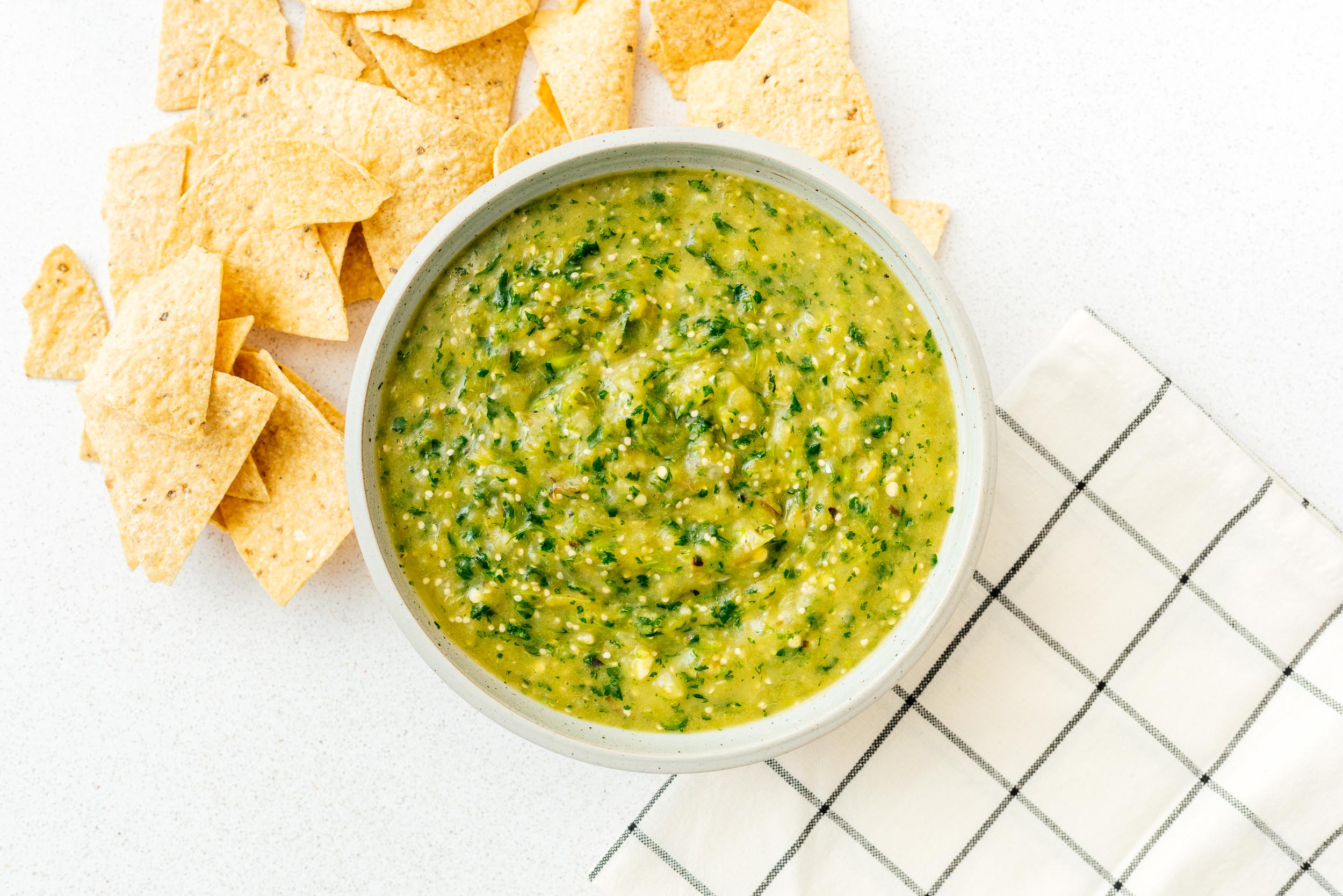
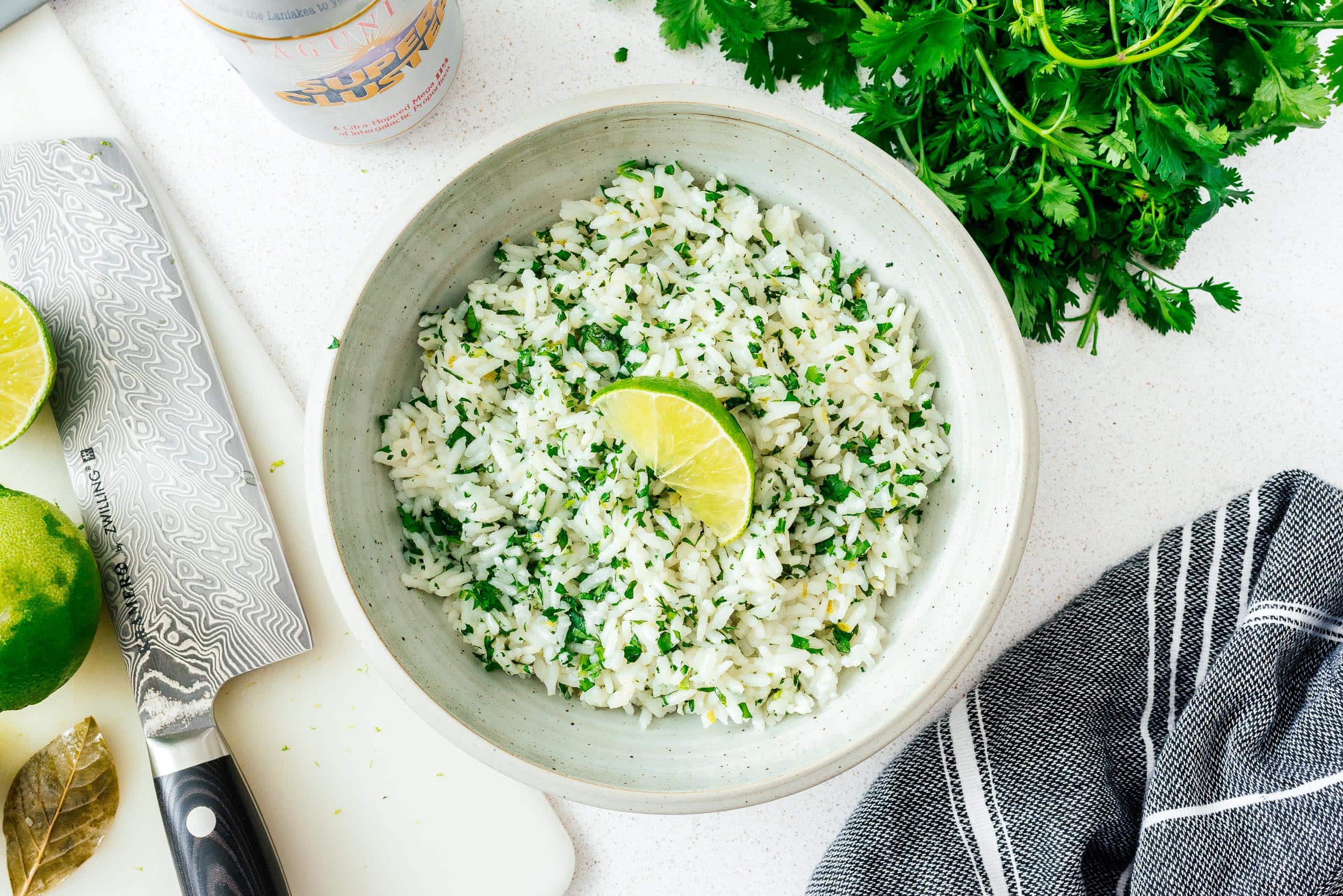

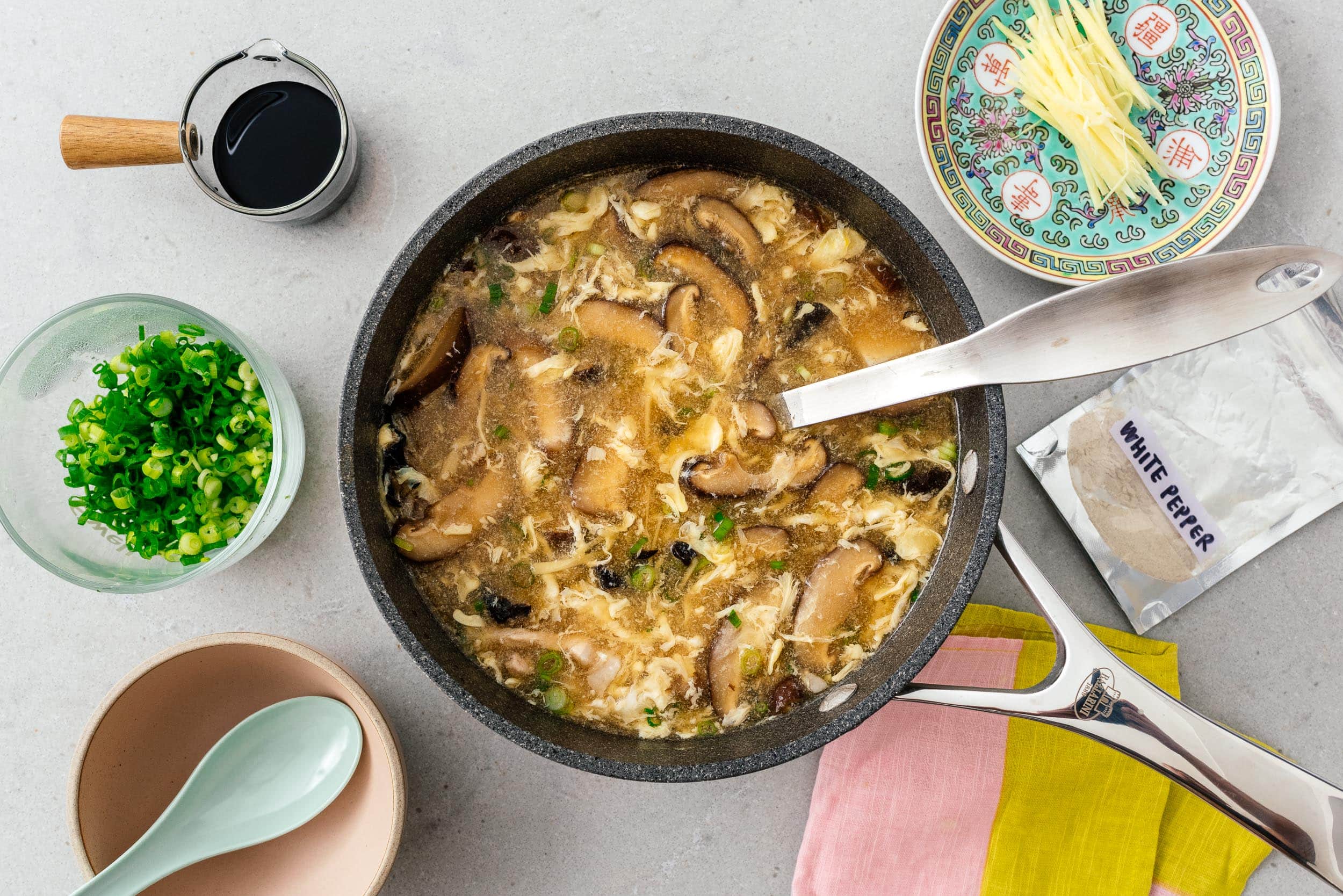

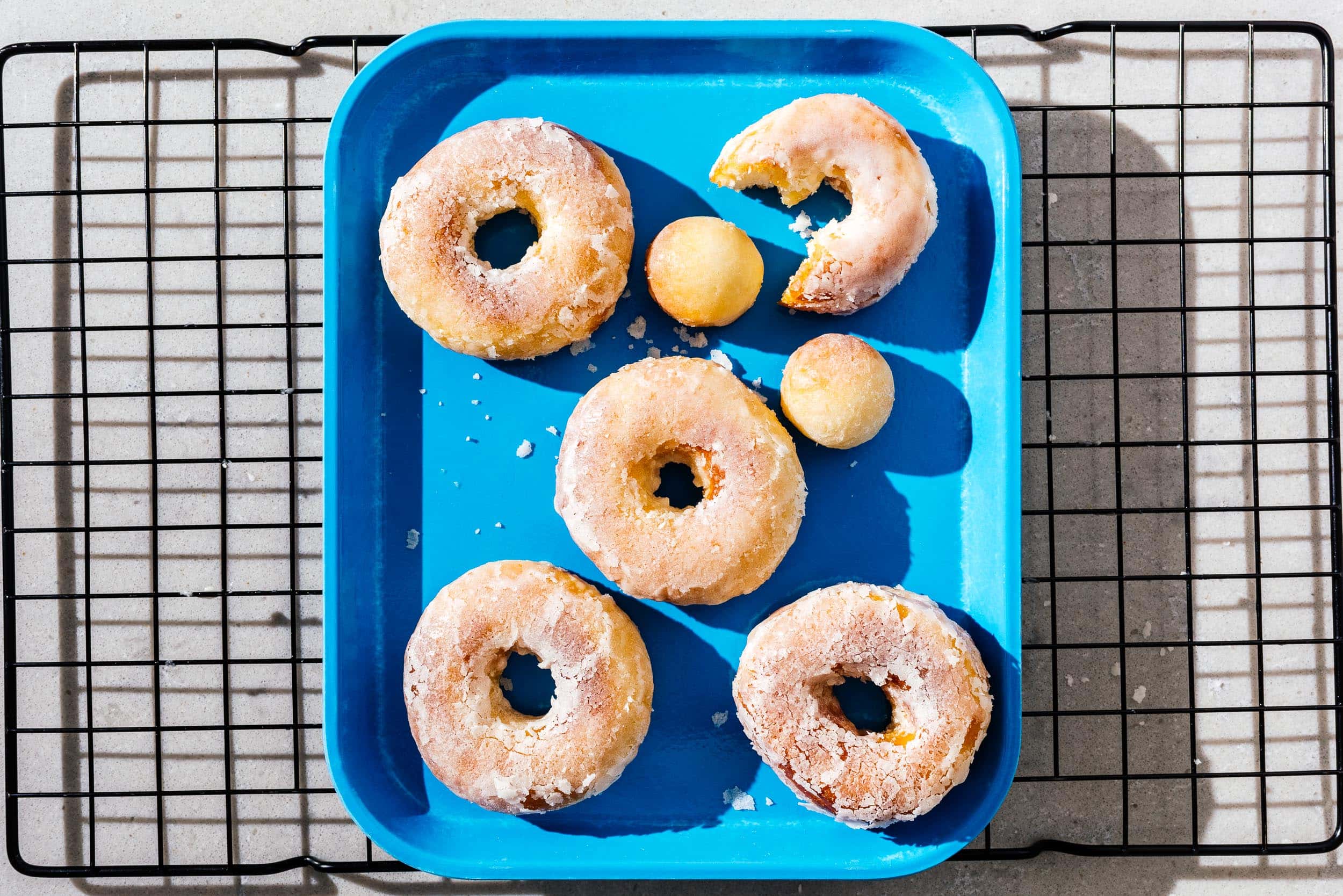

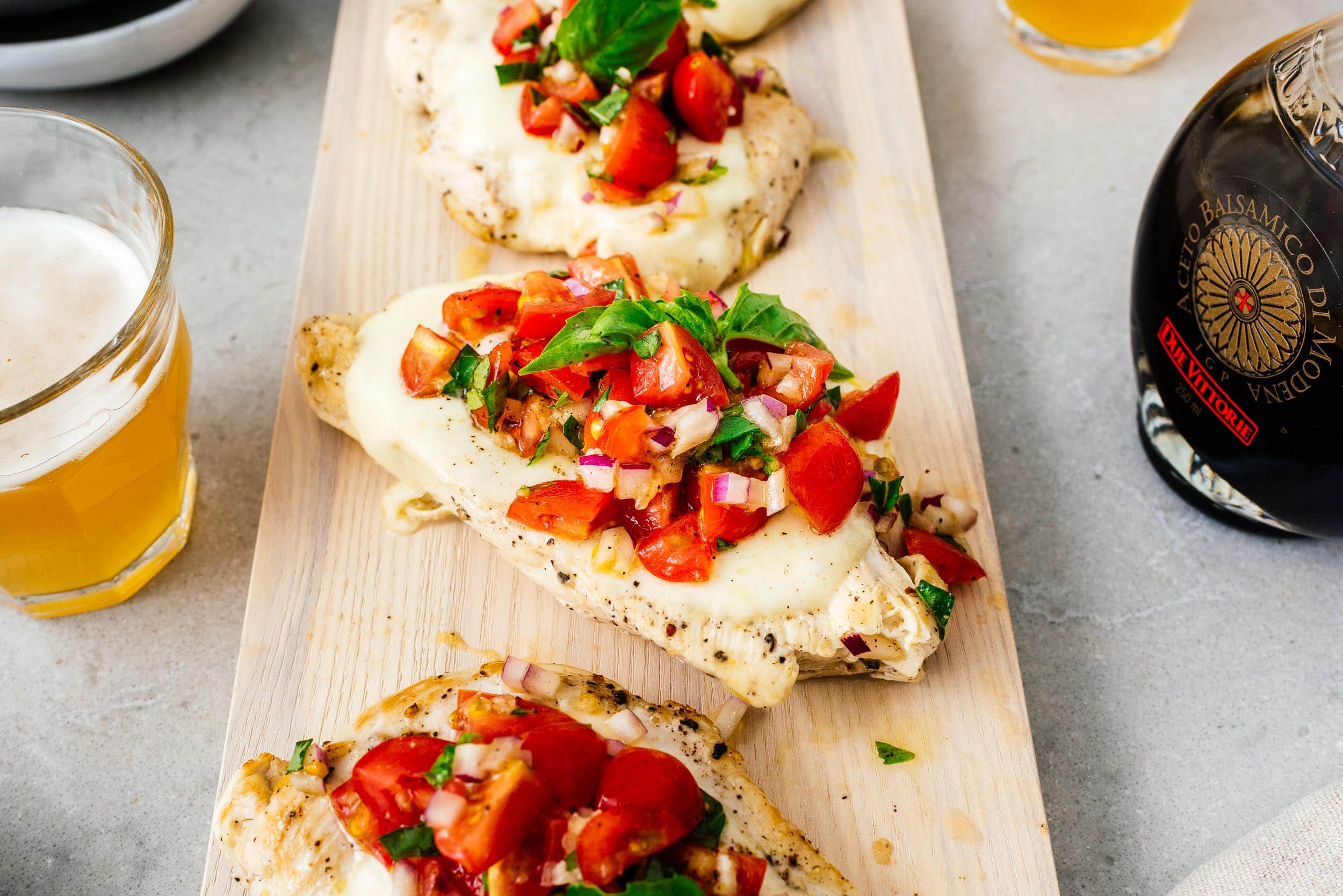
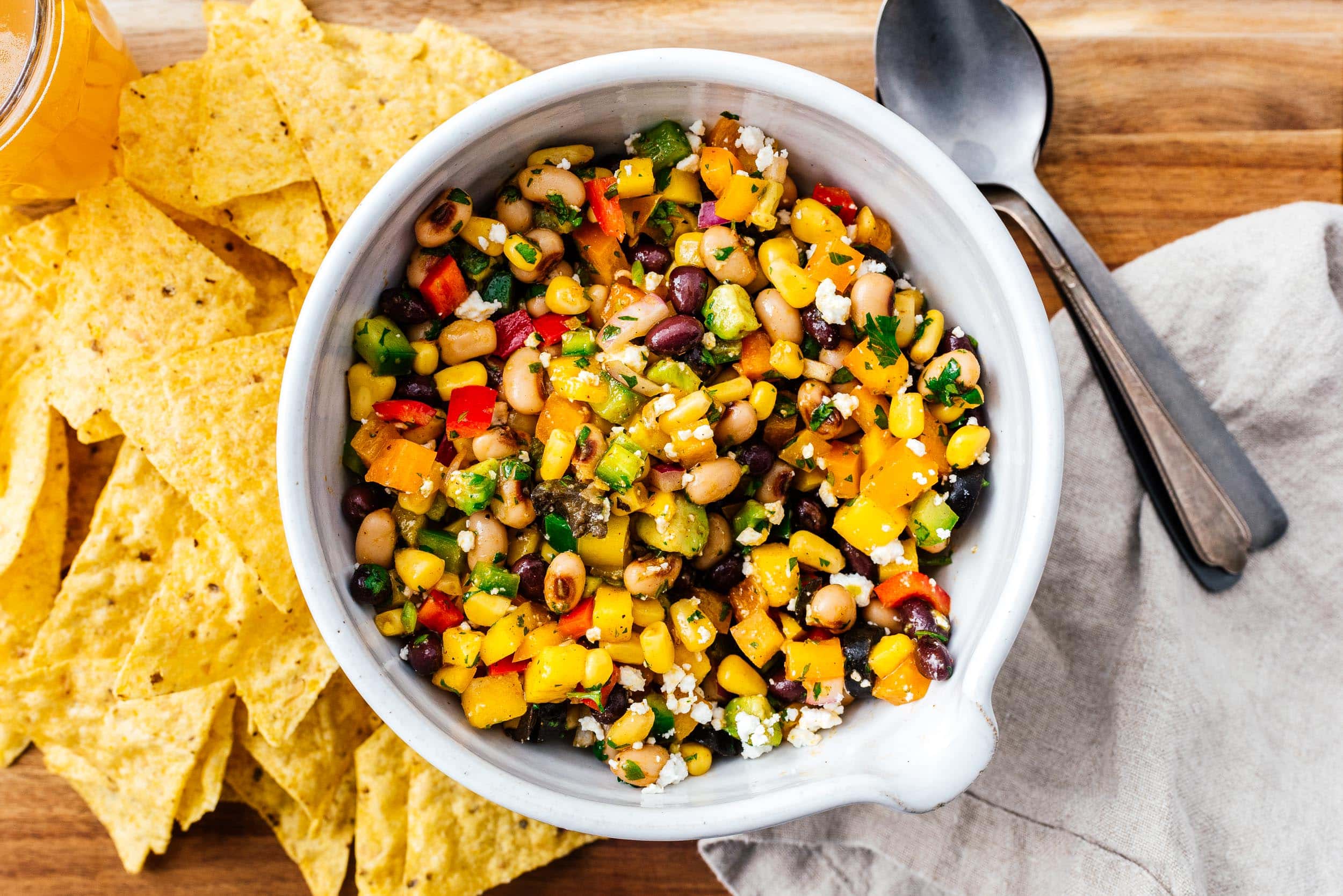
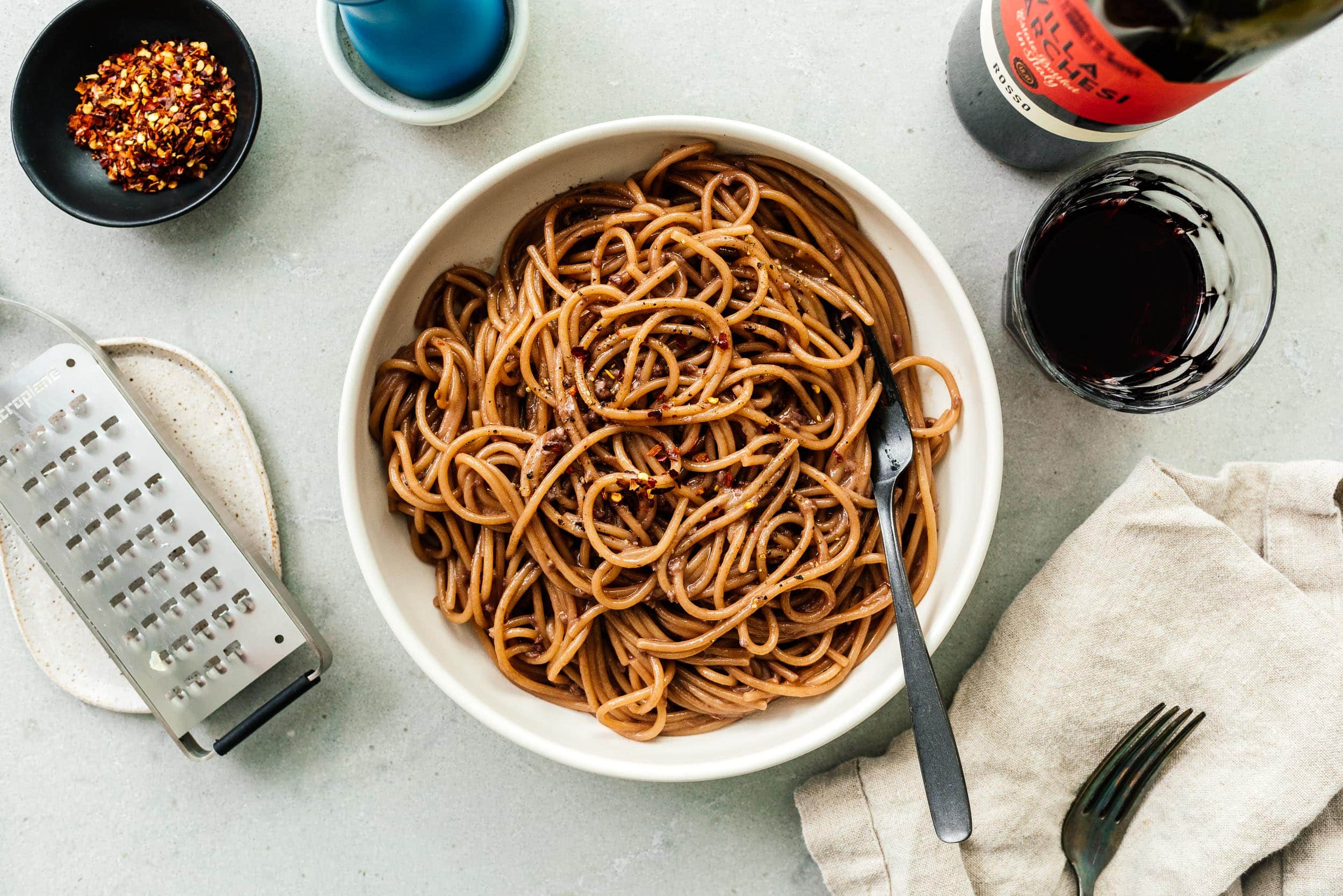
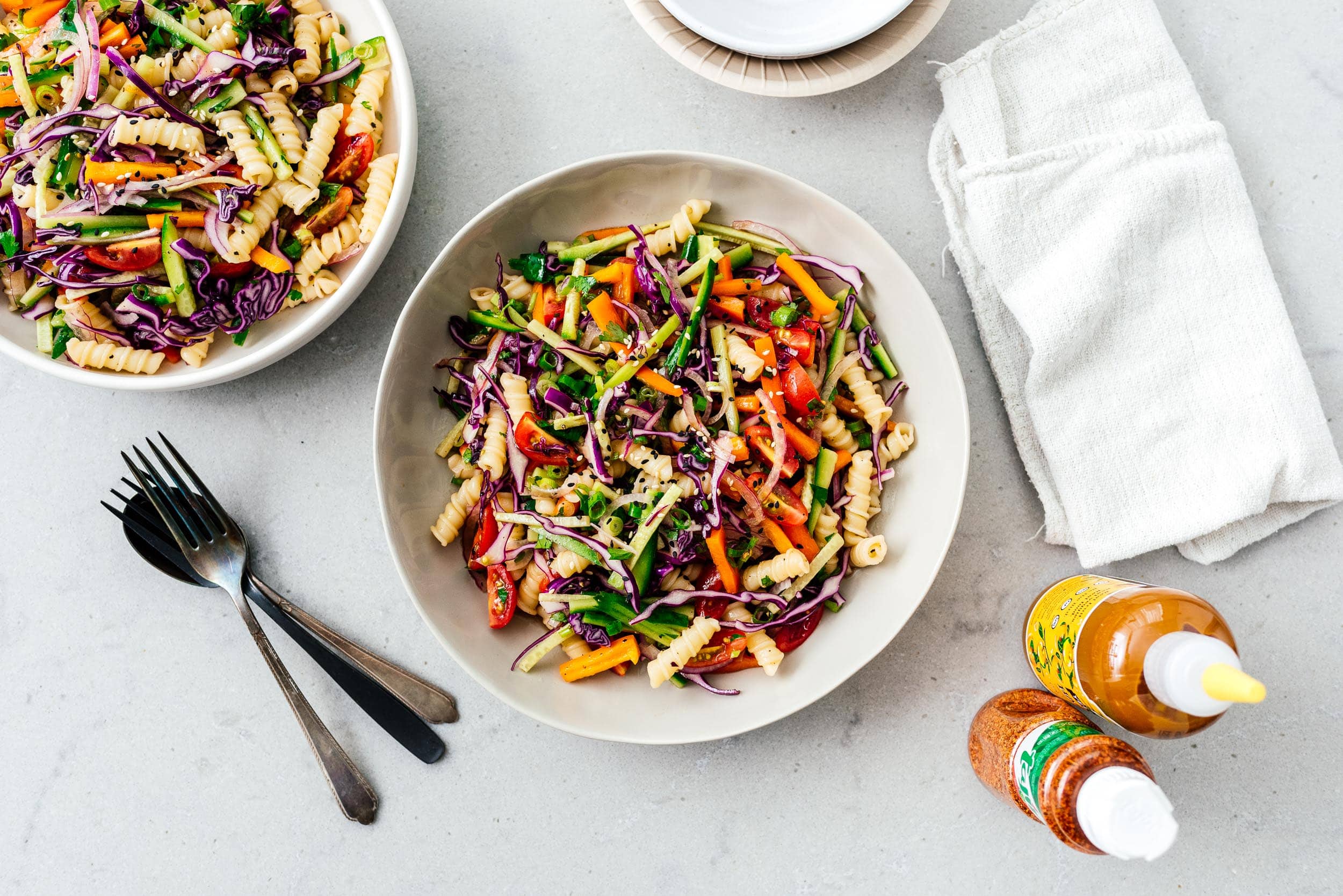
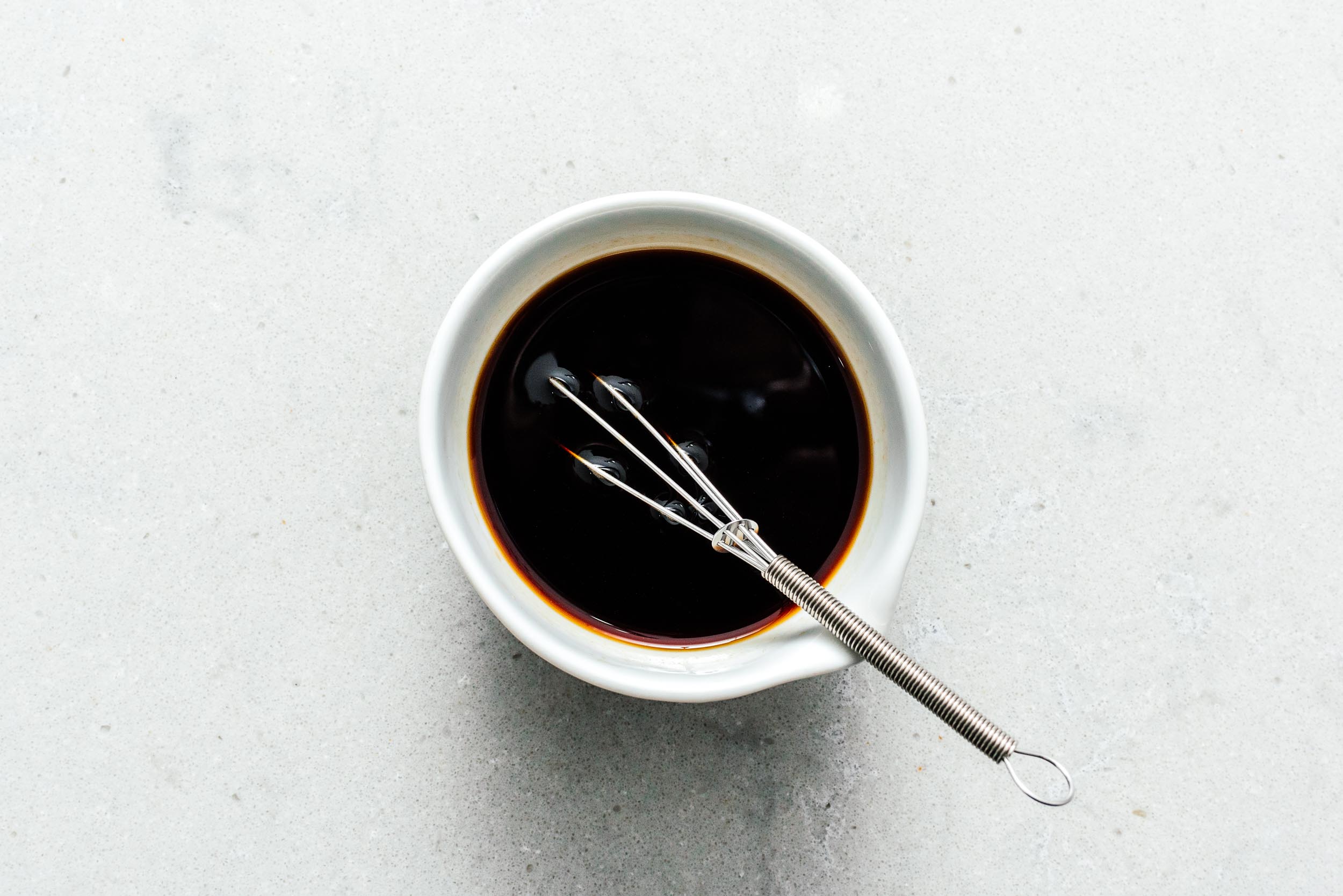

 2015 Holiday Giveaway
2015 Holiday Giveaway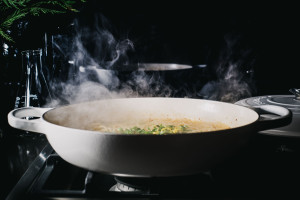 One-Pot Lemon Scallop Pea Spaghetti
One-Pot Lemon Scallop Pea Spaghetti Beer Battered Onion Rings, Jalapeno Aioli
Beer Battered Onion Rings, Jalapeno Aioli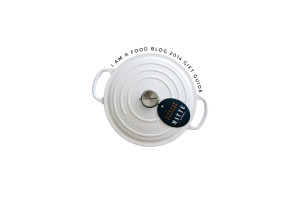 2014 Holiday Gift Guide and a Giveaway
2014 Holiday Gift Guide and a Giveaway Easy Gourmet Hot Wings and a Giveaway!
Easy Gourmet Hot Wings and a Giveaway!
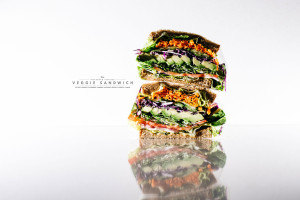 The Ultimate Veggie Sandwich
The Ultimate Veggie Sandwich Vegan(!) Creamy Corn Soup Recipe
Vegan(!) Creamy Corn Soup Recipe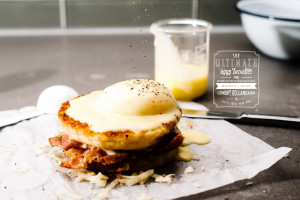 Sunday Brunch: Grilled Cheese Eggs Benny
Sunday Brunch: Grilled Cheese Eggs Benny